Search Result
Results for "
succinate
" in MedChemExpress (MCE) Product Catalog:
5
Biochemical Assay Reagents
12
Isotope-Labeled Compounds
| Cat. No. |
Product Name |
Target |
Research Areas |
Chemical Structure |
-
- HY-150205
-
|
|
Others
|
Inflammation/Immunology
|
|
Succinate/succinate receptor antagonist 1 (compound 7a) is a succinate/succinate receptor antagonist. Succinate/succinate receptor antagonist 1 blocks succinate signaling in gingival tissue. Succinate/succinate receptor antagonist 1 inhibits the activation of succinate receptor 1 (SucnRl) with an IC50 value of 20 μΜ. Succinate/succinate receptor antagonist 1 can be used for the research of periodontal disease .
|
-
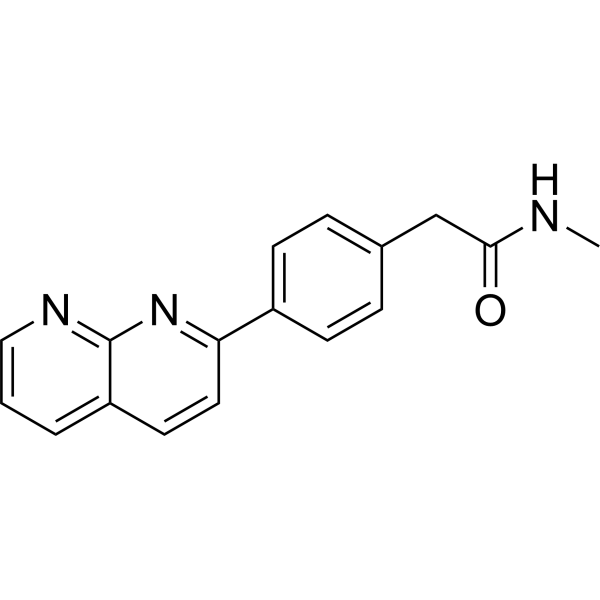
-
- HY-B1060
-
|
Methylprednisolone hydrogen succinate sodium
|
Glucocorticoid Receptor
|
Inflammation/Immunology
|
|
Methylprednisolone succinate (Methylprednisolone hydrogen succinate) sodium, a glucocorticoid, is a immunosuppressive agent with anti-inflammatory effects .
|
-
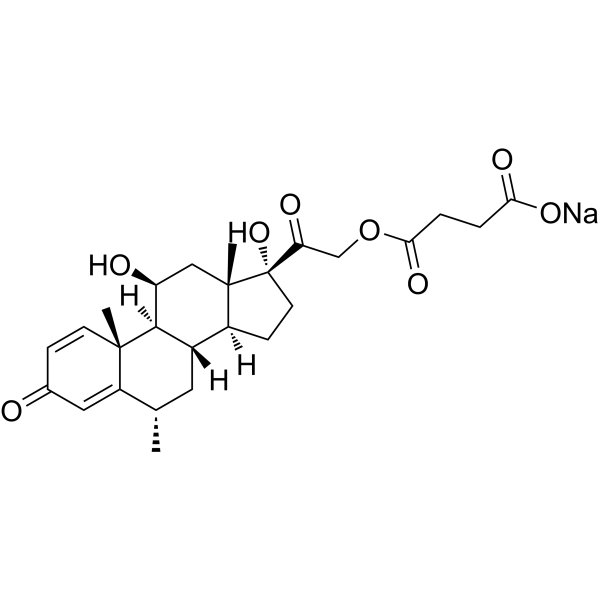
-
- HY-B1900R
-
|
Methylprednisolone hydrogen succinate (Standard)
|
Glucocorticoid Receptor
Bacterial
|
Inflammation/Immunology
Endocrinology
Cancer
|
|
Methylprednisolone succinate (Standard) is the analytical standard of Methylprednisolone succinate. This product is intended for research and analytical applications. Methylprednisolone succinate is a synthetic glucocorticoid and widely used as an anti-inflammatory agent.
|
-

-
- HY-109091B
-
|
GS-9876 succinate
|
Syk
|
Inflammation/Immunology
|
|
Lanraplenib succinate (GS-9876 succinate) is a highly selective and orally active SYK inhibitor (IC50=9.5 nM) in development for the treatment of inflammatory diseases. Lanraplenib succinate (GS-9876 succinate) inhibits SYK activity in platelets via the glycoprotein VI (GPVI) receptor without prolonging bleeding time (BT) in monkeys or humans .
|
-
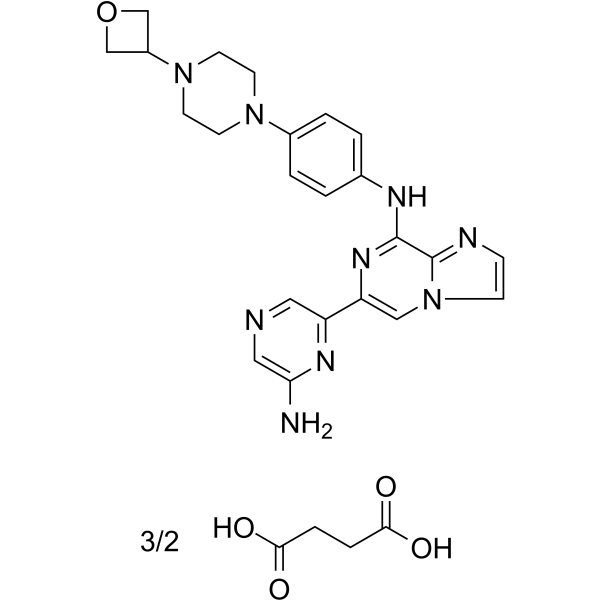
-
- HY-N7114
-
|
|
|
|
|
Chloramphenicol succinate is a proagent of Chloramphenicol, with Haemotoxicity. Chloramphenicol succinate also is an antibiotic. Chloramphenicol succinate is a competitive substrate and inhibitor of succinate dehydrogenase (SDH) that is the possible reason for its toxicity .
|
-
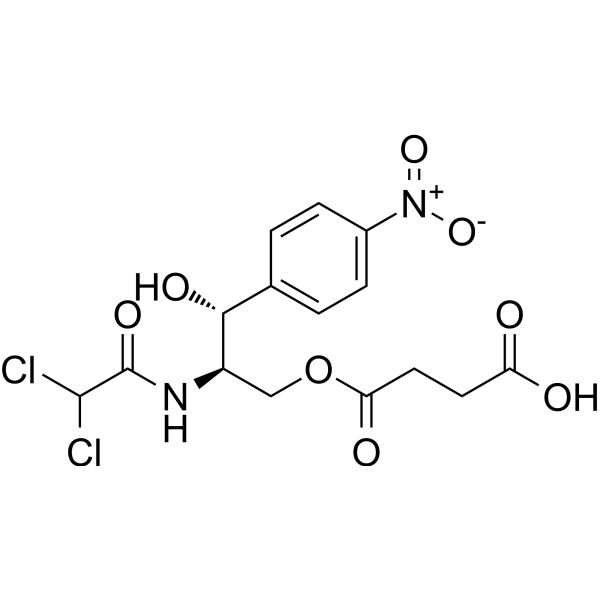
-
- HY-131553
-
|
Vitamin E succinate
|
Apoptosis
|
Cancer
|
|
D-α-Tocopherol Succinate (Vitamin E succinate) is an antioxidant tocopherol and a salt form of vitamin E. D-α-Tocopherol Succinate inhibits Cisplatin (HY-17394)-induced cytotoxicity. D-α-Tocopherol Succinate can be used for the research of cancer .
|
-

-
- HY-Y0808S
-
-

-
- HY-135815A
-
|
TAK-788 succinate; AP32788 succinate
|
EGFR
|
Cancer
|
|
Mobocertinib (TAK-788) succinate is an orally active and irreversible EGFR/HER2 inhibitor. Mobocertinib succinate potently inhibits oncogenic variants containing activating EGFRex20ins mutations with selectivity over wild-type EGFR. Mobocertinib succinate can be used in NSCLC research .
|
-
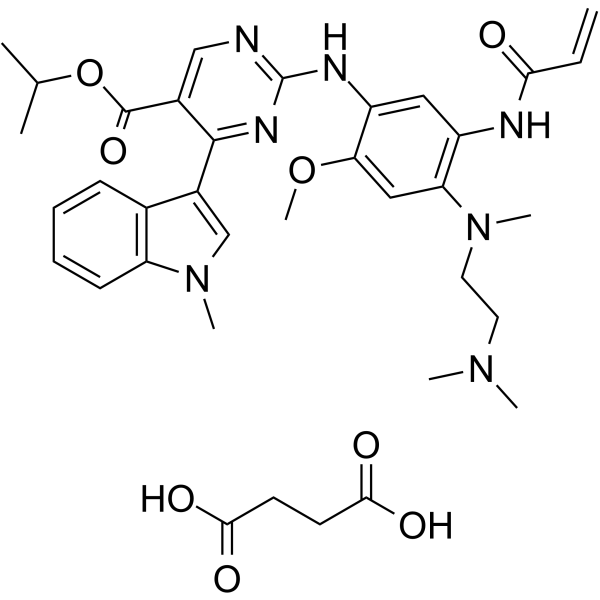
-
- HY-N7114A
-
|
|
Bacterial
Antibiotic
|
Infection
Metabolic Disease
|
|
Chloramphenicol succinate sodium is a proagent of Chloramphenicol, with Haemotoxicity. Chloramphenicol succinate is a competitive substrate and inhibitor of succinate dehydrogenase (SDH) that is the possible reason for its toxicity .
|
-
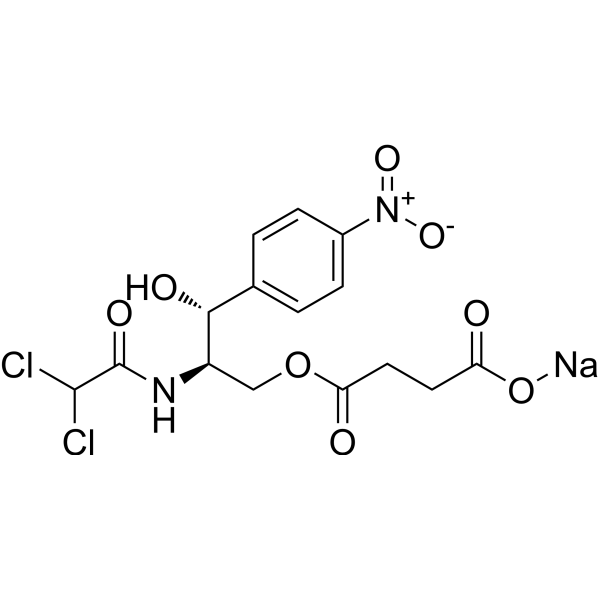
-
- HY-W015410
-
|
|
Endogenous Metabolite
|
Inflammation/Immunology
|
|
Disodium succinate is an anti-anxiety agent with oral activity. Disodium succinate is the salt form of Succinic acid. Disodium succinate is an intermediate product of the tricarboxylic acid cycle. Disodium succinate is an important platform chemical. Disodium succinate can be used as surfactant, additive, ion chelating agent, flavoring agent and other applications in chemical, pharmaceutical and food fields .
|
-
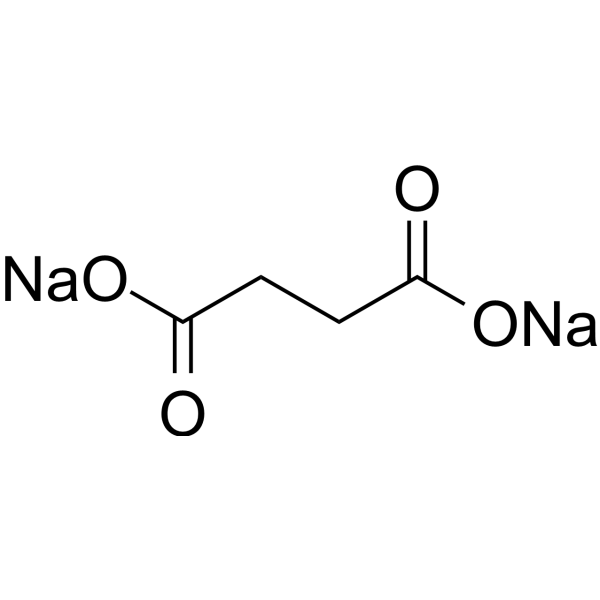
-
- HY-111529A
-
|
WR 238605 (succinate)
|
Parasite
|
Infection
|
|
Tafenoquine Succinate (WR 238605 Succinate) is an 8-aminoquinoline. Tafenoquine is an anti-malarial prophylactic agent .
|
-
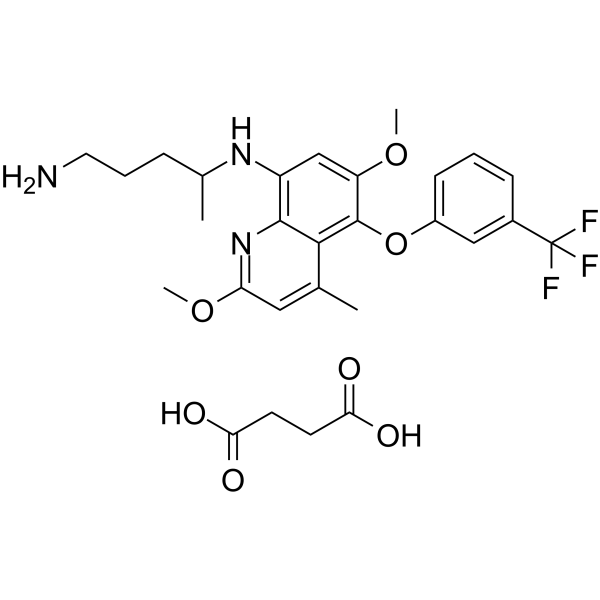
-
- HY-W015410S2
-
|
|
Endogenous Metabolite
|
Metabolic Disease
|
|
Disodium succinate-d4 is the deuterium labeled Disodium succinate[1]. Disodium succinate is the disodium salt of Succinic acid. Succinic acid is an intermediate product of the tricarboxylic acid cycle, as well as one of fermentation products of anaerobic metabolism[2].
|
-

-
- HY-W002620A
-
-

-
- HY-139300A
-
|
HMPL-813 succinate
|
EGFR
|
Cancer
|
|
Epitinib succinate is an orally active and selective epidermal growth factor receptor tyrosine kinase inhibitor (EGFR-TKI) designed for optimal brain penetration. Epitinib succinate can be used for the research of cancer . Epitinib (succinate) is a click chemistry reagent, it contains an Alkyne group and can undergo copper-catalyzed azide-alkyne cycloaddition (CuAAc) with molecules containing Azide groups.
|
-
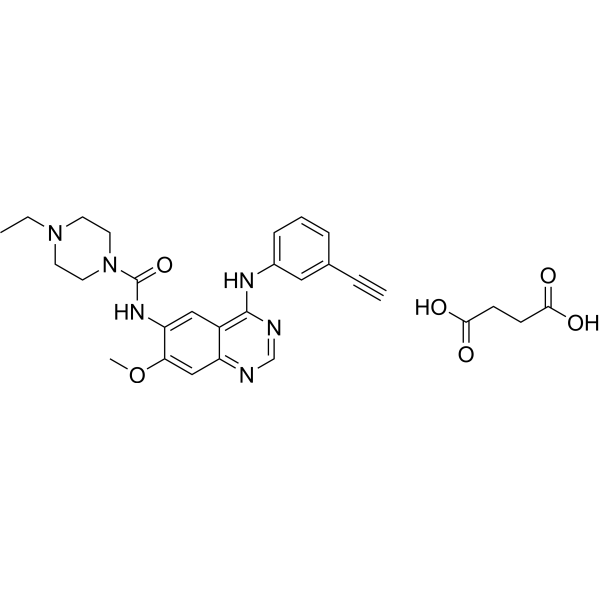
-
- HY-16743B
-
|
Venglustat succinate; SAR402671 succinate; GZ402671 succinate
|
Glucosylceramide Synthase (GCS)
|
Neurological Disease
|
|
Ibiglustat (Venglustat) succinate is an orally active, brain-penetrant glucosylceramide synthase (GCS) inhibitor. Ibiglustat succinate can be used for the research of Gaucher disease type 3, Parkinson's disease associated with GBA mutations, Fabry disease, GM2 gangliosidosis, and autosomal dominant polycystic kidney disease .
|
-
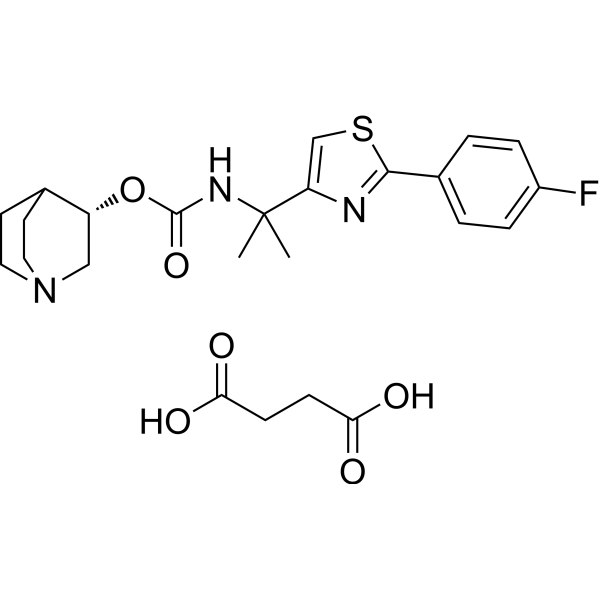
-
- HY-135006
-
|
|
Cholinesterase (ChE)
|
Neurological Disease
|
|
Octahydroaminoacridine succinate, a Tacrine analogue, is an acetylcholinesterse (AChE) and butyrylcholinesterase (BChE) inhibitor. Octahydroaminoacridine succinate can be used for Alzheimer's disease (AD) research .
|
-
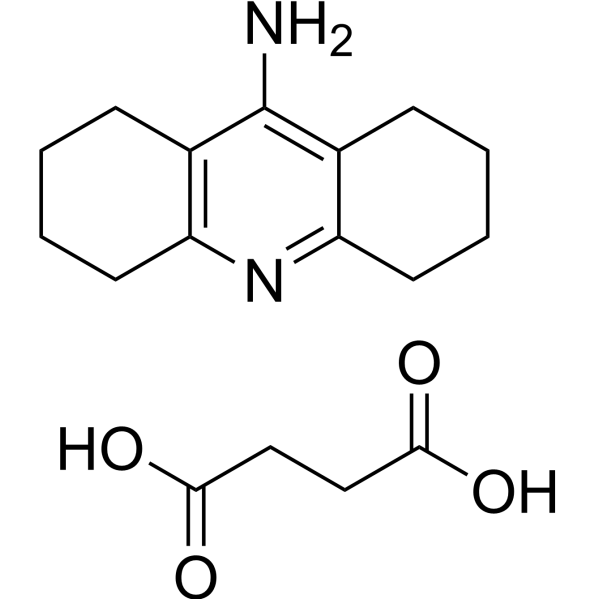
-
- HY-155442
-
|
|
Others
|
Inflammation/Immunology
|
MIQ-N-succinate is a hapten with a four-carbon chain. MIQ-N-succinate consist of MIQ and succinic anhydride. MIQ-N-succinate has a carboxylic acid end group to attach to the lysine residues on the carrier proteins .
|
-

-
- HY-15777B
-
|
LEE011 succinate
|
CDK
|
Cancer
|
|
Ribociclib succinate (LEE011 succinate) is a highly specific CDK4/6 inhibitor with IC50 values of 10 nM and 39 nM, respectively, and is over 1,000-fold less potent against the cyclin B/CDK1 complex.
|
-

-
- HY-15777C
-
|
LEE011 succinate hydrate
|
CDK
|
Cancer
|
|
Ribociclib succinate hydrate (LEE011 succinate hydrate) is a highly specific CDK4/6 inhibitor with IC50 values of 10 nM and 39 nM, respectively, and is over 1,000-fold less potent against the cyclin B/CDK1 complex.
|
-
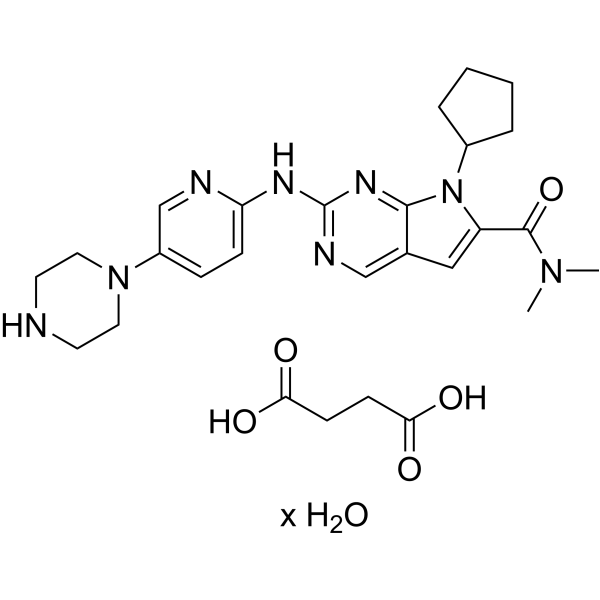
-
- HY-W015410S
-
|
|
Endogenous Metabolite
|
Metabolic Disease
|
|
Disodium succinate-13C2 is the 13C labeled Disodium succinate[1]. Disodium succinate is the disodium salt of Succinic acid. Succinic acid is an intermediate product of the tricarboxylic acid cycle, as well as one of fermentation products of anaerobic metabolism[2].
|
-
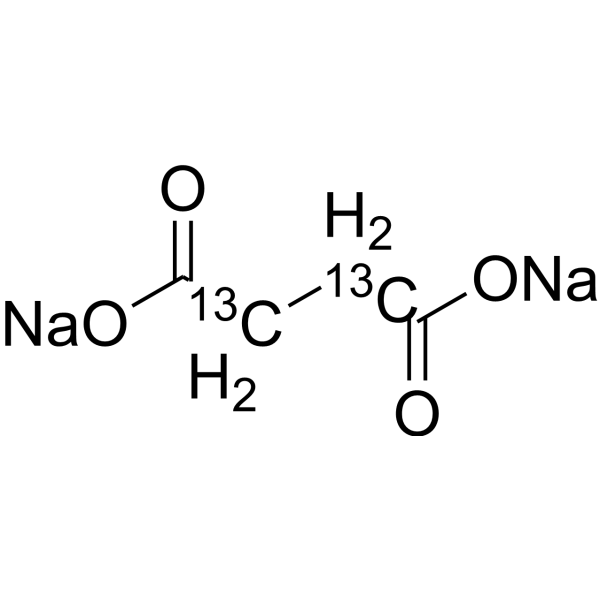
-
- HY-B1900
-
-
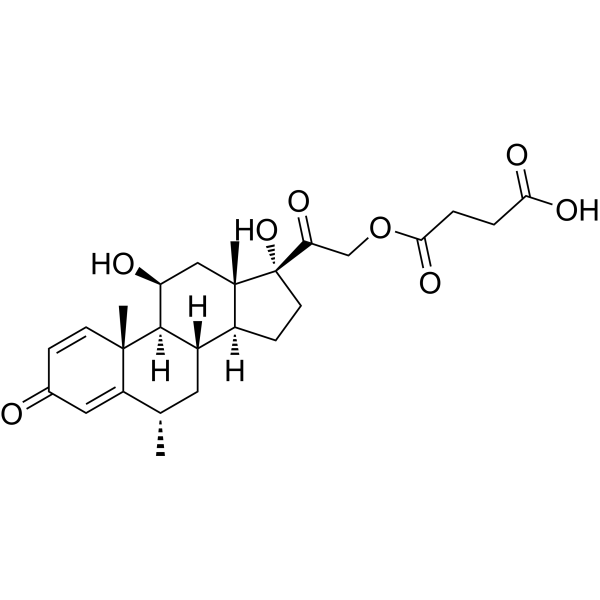
-
- HY-117684A
-
|
DDD107498 succinate; DDD-498 succinate; M5717 succinate
|
Parasite
CaMK
|
Infection
|
|
Cabamiquine (DDD107498) succinate is a potent and orally active antimalarial agent, inhibits multiple life-cycle stages of the parasite, with an EC50 of 1 nM against P. falciparum 3D7. Cabamiquine succinate inhibits protein synthesis by targeting eEF2/CaMKIII, with an EC50 of 2 nM for WT-PfeEF2 .
|
-
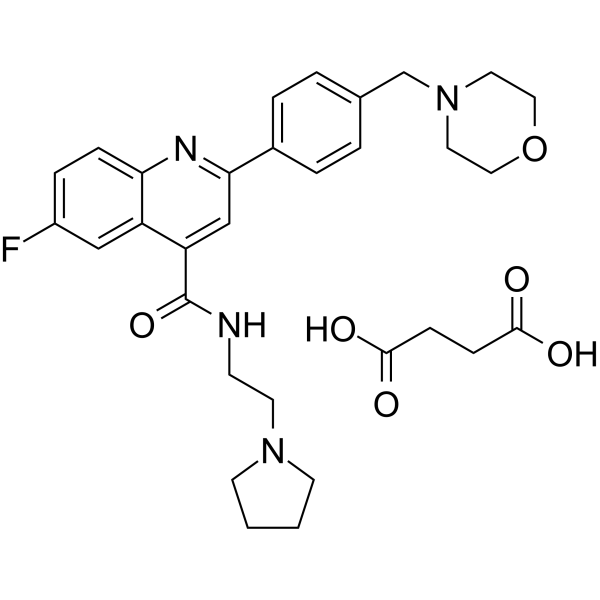
-
- HY-15408A
-
|
SYR-472 succinate
|
Dipeptidyl Peptidase
|
Metabolic Disease
|
|
Trelagliptin (SYR-472) succinate is a potent, orally active and highly selective DPP-4 inhibitor with an IC50 of 4 nM. Trelagliptin succinate improves glycemic control in vivo and can be used for the study of type 2 diabetes mellitus (T2DM) .
|
-
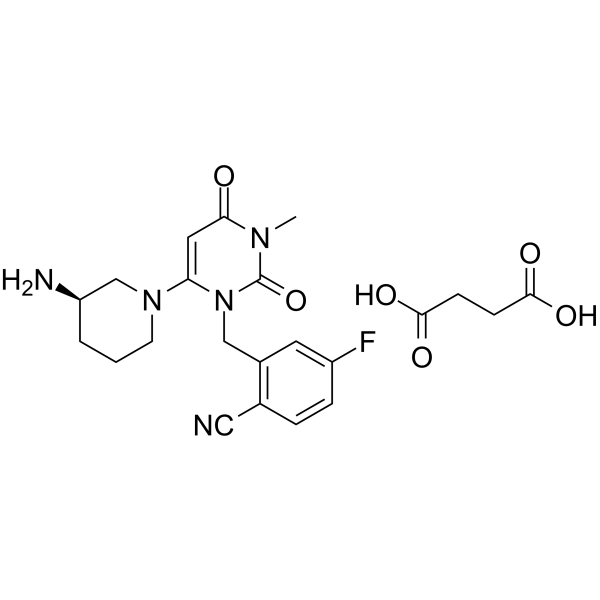
-
- HY-136352
-
|
|
Taste Receptor
|
Others
|
|
Adenosine 5'-succinate is a chemically AMP-related compound and potently inhibits Denatonium benzoate/taste receptor activation of transducin .
|
-
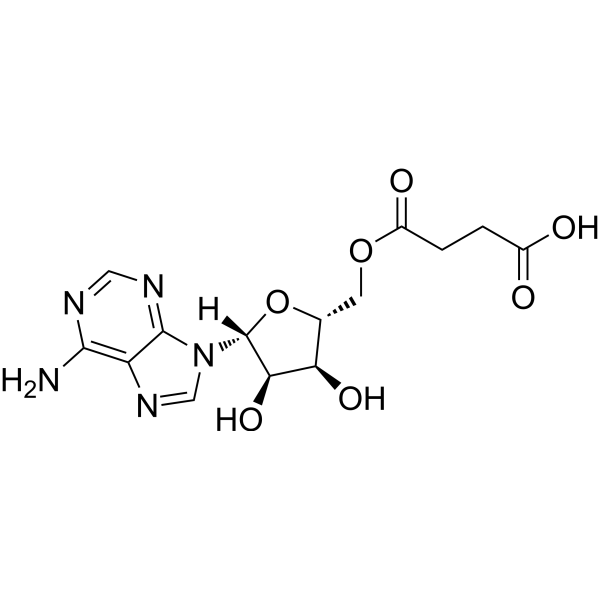
-
- HY-17503A
-
-
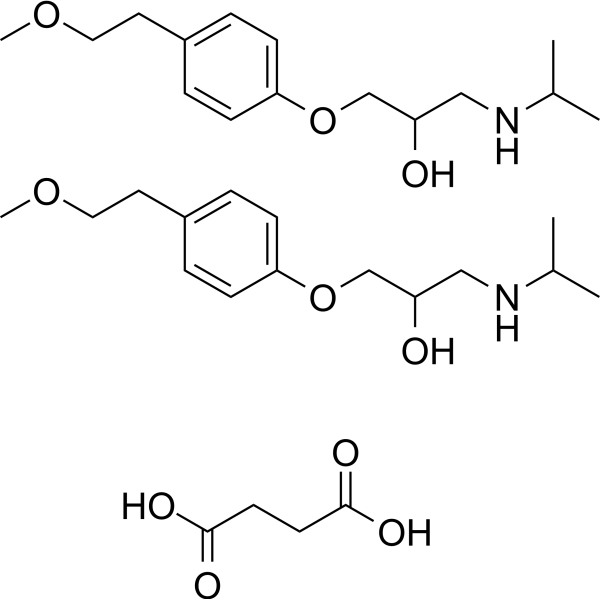
-
- HY-156960A
-
|
|
Aminopeptidase
Leukotriene Receptor
|
Inflammation/Immunology
|
|
JNJ-40929837 succinate is a selective and orally active LTA4H (leukotriene A4 hydrolase) inhibitor. JNJ-40929837 succinate effectively inhibits aminopeptidase activity and causes serum accumulation of Pro-Gly-Pro. JNJ-40929837 succinate can be used in asthma research .
|
-
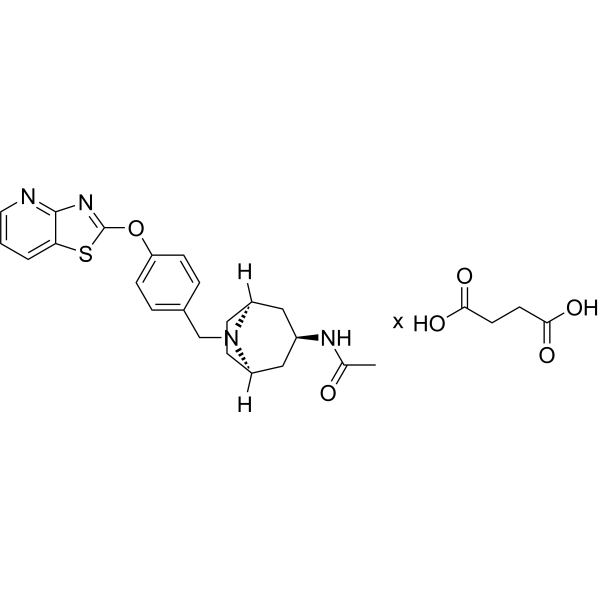
-
- HY-13640A
-
|
GS-9219 succinate; VDC-1101 succinate
|
Others
|
Cancer
|
|
Rabacfosadine (GS-9219) succinate, a novel proagent of the nucleotide analogue PMEG, is designed as a cytotoxic agent that preferentially targets lymphoid cells .
|
-
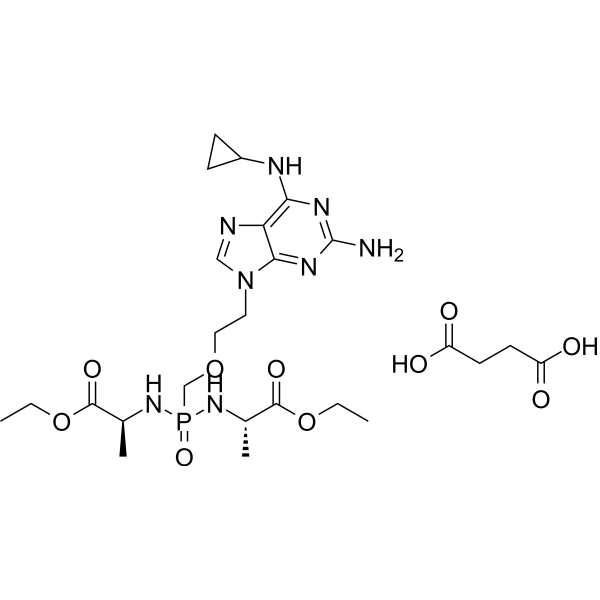
-
- HY-B1658A
-
|
(R)-Frovatriptan succinate hydrate; SB 209509 succinate hydrate; VML 251 succinate hydrate
|
5-HT Receptor
|
Neurological Disease
|
|
Frovatriptan succinate hydrate ((R)-Frovatriptan succinate hydrate) is a potent, high affinity, selective and orally active 5-HT1B (pK50 of 8.2) and 5-HT1D receptor agonist. Frovatriptan succinate hydrate exhibits >10-fold selectivity for 5-HT1B and 5-HT1D over 5-HT1A, 5-HT1F, and 5-HT7 and >1000-fold selectivity over other 5-HT, dopamine, histamine H1, and α1-adrenoceptor. Frovatriptan succinate hydrate has the potential for migraine research .
|
-
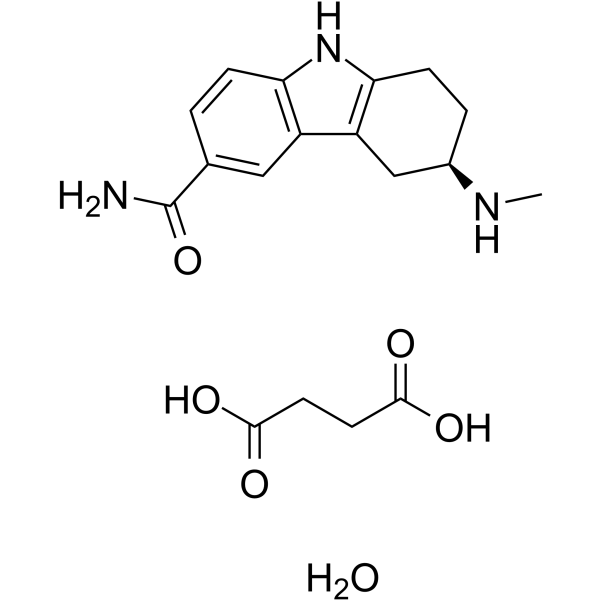
-
- HY-B1658B
-
|
(R)-Frovatriptan succinate; SB 209509 succinate; VML 251 succinate
|
5-HT Receptor
|
Neurological Disease
|
|
Frovatriptan succinate ((R)-Frovatriptan succinate) is a potent, high affinity, selective and orally active 5-HT1B (pK50 of 8.2) and 5-HT1D receptor agonist. Frovatriptan succinate exhibits >10-fold selectivity for 5-HT1B and 5-HT1D over 5-HT1A, 5-HT1F, and 5-HT7 and >1000-fold selectivity over other 5-HT, dopamine, histamine H1, and α1-adrenoceptor. Frovatriptan succinate has the potential for migraine research .
|
-
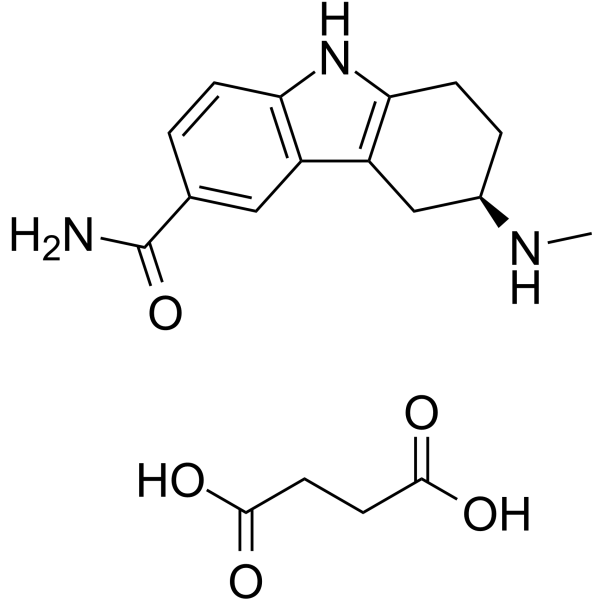
-
- HY-B1658BS
-
|
(R)-Frovatriptan-d3 succinate; SB 209509-d3 succinate; VML 251-d3 succinate
|
Isotope-Labeled Compounds
5-HT Receptor
|
Neurological Disease
|
|
Frovatriptan-d3 (succinate) is deuterium labeled Frovatriptan (succinate). Frovatriptan succinate ((R)-Frovatriptan succinate) is a potent, high affinity, selective and orally active 5-HT1B (pK50 of 8.2) and 5-HT1D receptor agonist. Frovatriptan succinate exhibits >10-fold selectivity for 5-HT1B and 5-HT1D over 5-HT1A, 5-HT1F, and 5-HT7 and >1000-fold selectivity over other 5-HT, dopamine, histamine H1, and α1-adrenoceptor. Frovatriptan succinate has the potential for migraine research[1][2].
|
-

-
- HY-114458
-
-
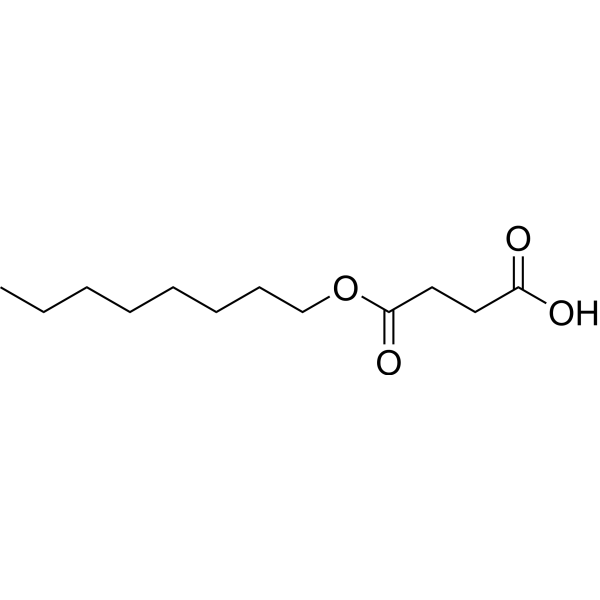
-
- HY-Y0836
-
|
Diethyl Butanedioate
|
|
|
|
Diethyl succinate (Diethyl Butanedioate) is used at physiological pH and crosses biological membranes, incorporates into cells in tissue culture and is metabolized by the TCA cycle. Diethyl succinate is known to be non-toxic and used in fragrances and flavoring .
|
-
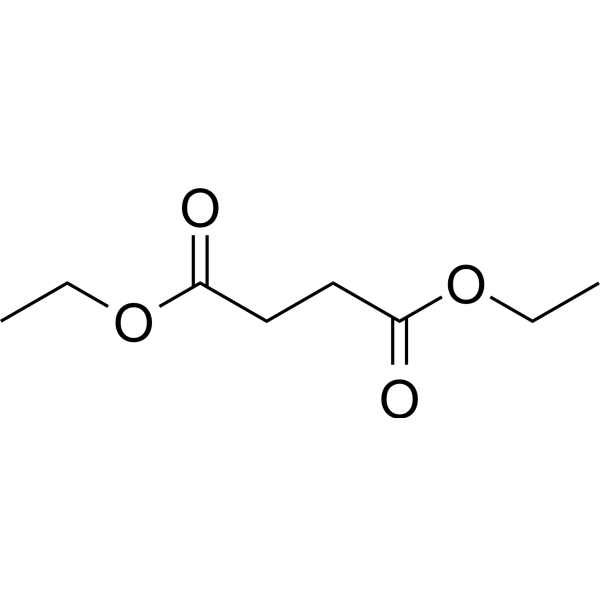
-
- HY-Y0836S1
-
|
Diethyl Butanedioate-d4
|
Isotope-Labeled Compounds
|
Metabolic Disease
|
|
Diethyl succinate-d4 is the deuterium labeled Diethyl succinate[1]. Diethyl succinate (Diethyl Butanedioate) is used at physiological pH and crosses biological membranes, incorporates into cells in tissue culture and is metabolized by the TCA cycle. Diethyl succinate is known to be non-toxic and used in fragrances and flavoring[2].
|
-

-
- HY-Y0808
-
|
|
Biochemical Assay Reagents
|
Others
|
|
Dimethyl succinate is a biochemical reagent that can be used as a biological material or organic compound for life science related research .
|
-

-
- HY-A0002R
-
|
YM905 (Standard)
|
mAChR
|
Neurological Disease
Cancer
|
|
Solifenacin (Succinate) (Standard) is the analytical standard of Solifenacin (Succinate). This product is intended for research and analytical applications. Solifenacin Succinate (YM905) is a novel muscarinic receptor antagonist with pKis of 7.6, 6.9 and 8.0 for M1, M2 and M3 receptors, respectively.
|
-

-
- HY-12694
-
|
R-108512
|
5-HT Receptor
Apoptosis
Autophagy
|
Metabolic Disease
Cancer
|
|
Prucalopride succinate is an orally active, selective and specific 5-HT 4 receptor agonist (high affinity), with pKis of 8.6 and 8.1 for human 5-HT4a/4b receptors, respectively. Prucalopride succinate improves intestinal motility by promoting regeneration of the intestinal nervous system in rats. Prucalopride succinate also shows anticancer activity by blocking of the PI3K/AKT/mTor signaling pathway. Prucalopride succinate can be used in studies of chronic constipation, pseudo-intestinal obstruction and cancer .
|
-

-
- HY-50669A
-
-

-
- HY-B0121
-
|
GR 43175 succinate
|
5-HT Receptor
|
Neurological Disease
|
|
Sumatriptan succinate (GR 43175) is an orally active 5-HT1 receptor agonist with IC50s of 7.3 nm, 9.3nm and 17.8 nm for 5-HT1D, 5-HT1B and 5-HT1F receptors, respectively. Sumatriptan succinate can be used for migraine headache research .
|
-
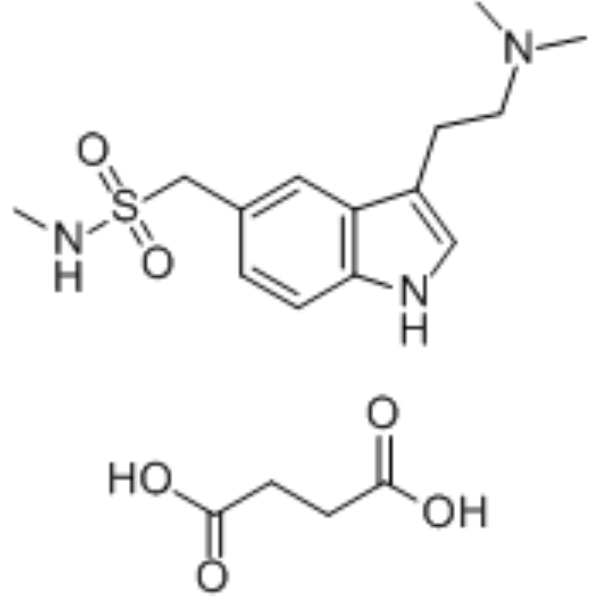
-
- HY-110272
-
|
PTK787 succinate; ZK-222584 succinate; CGP-79787 succinate
|
VEGFR
|
Cancer
|
|
Vatalanib (PTK787) succinate is a potent and orally active VEGFR inhibitor with IC50s of 37 nM, 77 nM, 270 nM, 660 nM, 730 nM, 1400 nM, and 580 nM for KDR, Flt-1, Flk, Flt-4, c-Kit, c-Fms, and PDGFR-β, respectively .
|
-
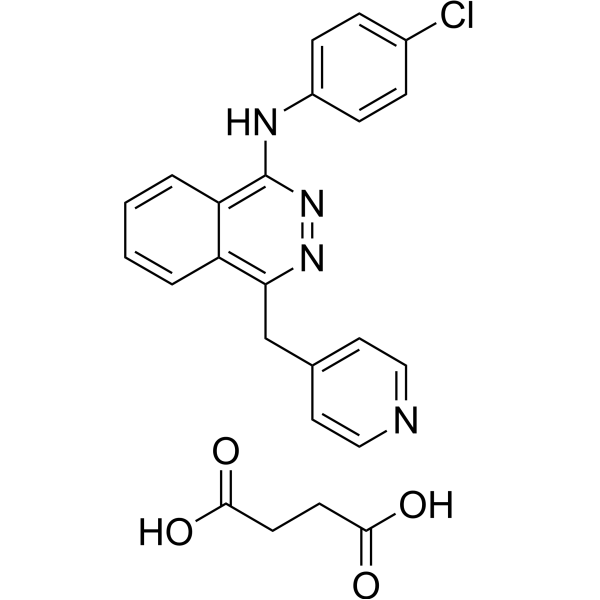
-
- HY-136773A
-
|
ALK2-IN-4 succinate
|
TGF-β Receptor
|
Metabolic Disease
|
|
ALK2-IN-4 succinate is a potent ALK2 inhibitor extracted from patent WO2020086963A1, compound Formula I free base .
|
-

-
- HY-B1658CS
-
-
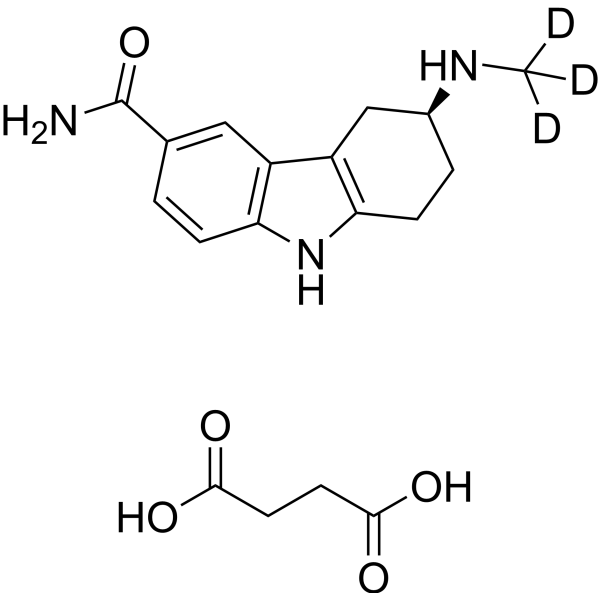
-
- HY-W250175
-
|
|
Biochemical Assay Reagents
|
Others
|
|
Methoxypolyethylene glycol succinimidyl succinate is a biochemical reagent that can be used as a biological material or organic compound for life science related research.
|
-
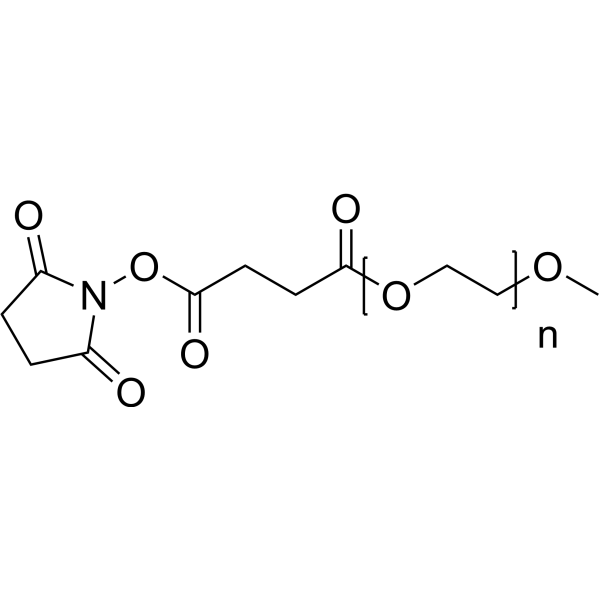
-
- HY-117621A
-
|
|
CCR
|
Metabolic Disease
|
|
PF-0463481 succinate is a potent and orally active dual CCR2/CCR5 antagonist with comparable human and rodent CCR2 potency (rat IC50=20.8 nM), and displays 10-20 fold less rodent CCR5 potency (rat IC50=470 nM). PF-0463481 succinate is safe and well-tolerated and has the potential for the study of diabetic nephropathy .
|
-
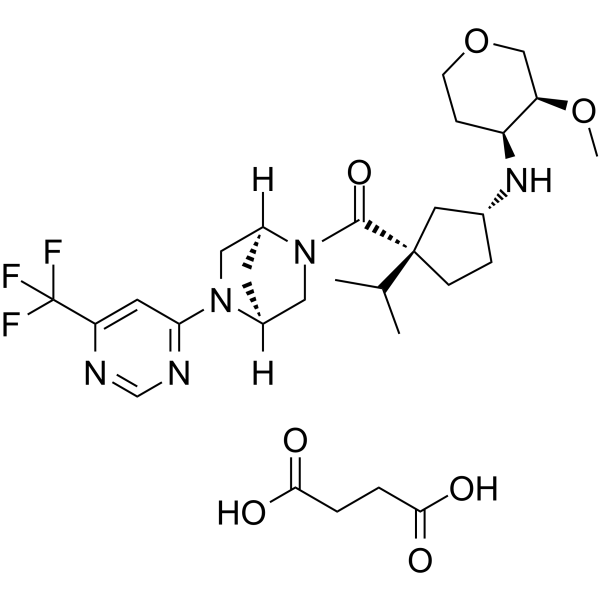
-
- HY-A0002S
-
|
YM905-d5
|
Isotope-Labeled Compounds
mAChR
|
Neurological Disease
|
|
Solifenacin-d5 (succinate) is deuterium labeled Solifenacin (Succinate). Solifenacin Succinate (YM905) is a novel muscarinic receptor antagonist with pKis of 7.6, 6.9 and 8.0 for M1, M2 and M3 receptors, respectively.
|
-
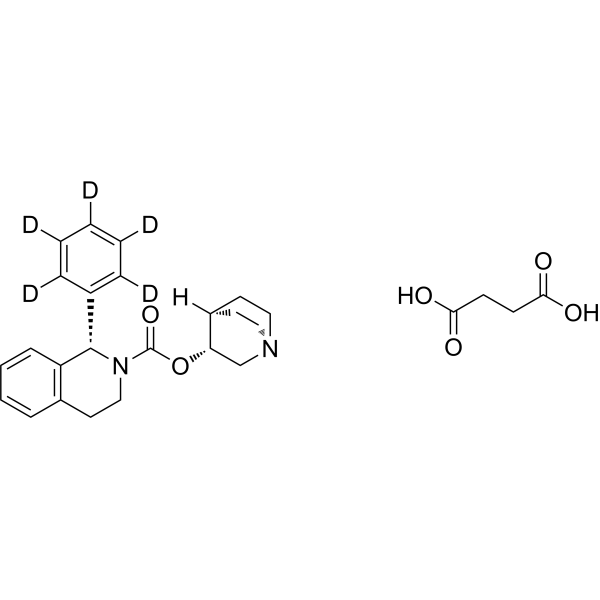
-
- HY-119976
-
|
|
Fungal
|
Infection
|
|
Boscalid is an anti-fungal agent. Boscalid is a succinate dehydrogenase (SDH) inhibitor .
|
-

-
- HY-10885
-
|
ABT-472
|
PARP
|
Cancer
|
|
A-620223 succinate (ABT-472) is an orally available poly(ADP-ribose) polymerase (PARP) inhibitor. A-620223 succinate (ABT-472) exhibits very good potency against the PARP-1 enzyme with a Ki value of 8 nM and an EC50 value of 3 nM in whole cell assay, making it useful in cancer research .
|
-
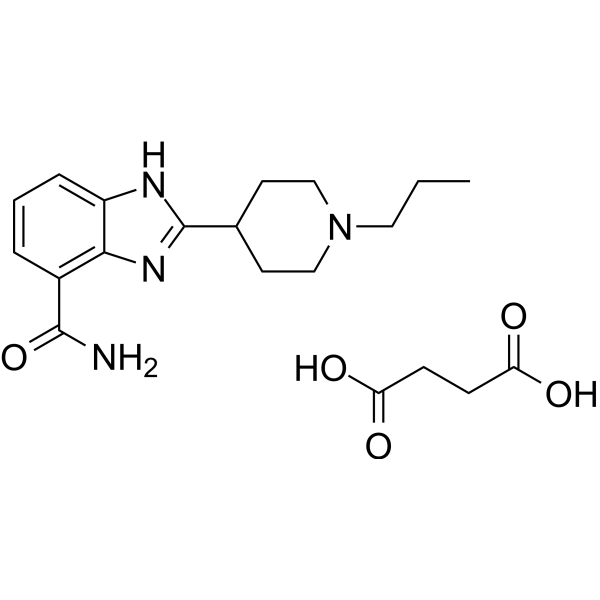
-
- HY-N0677
-
|
|
Influenza Virus
|
Infection
Inflammation/Immunology
Cancer
|
|
Dehydroandrographolide succinate, extracted from herbal medicine Andrographis paniculata (Burm f) Nees, is widely used for the treatment of viral pneumonia and viral upper respiratory tract infections because of its immunostimulatory, anti-infective and anti-inflammatory effect .
|
-
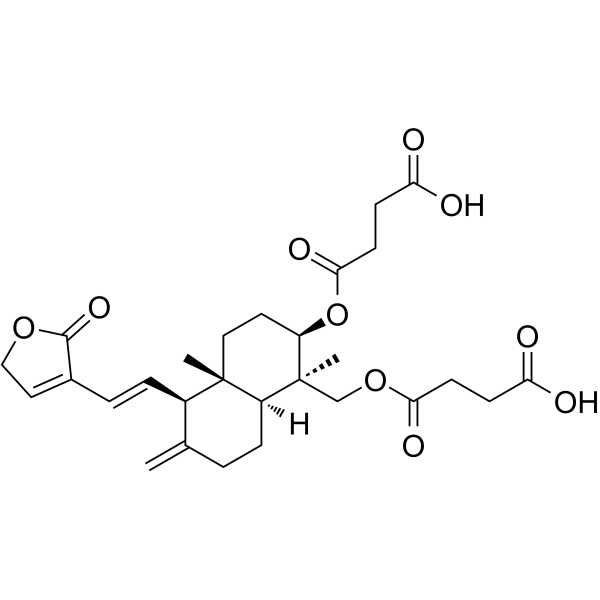
-
- HY-16688A
-
|
|
|
|
|
RU 24969 succinate is a 5-HT receptor agonist with Ki values of 0.38 and 2.5 nM for 5-HT1B and 5-HT1A, respectively. RU 24969 decreases fluid consumption and increases forward locomotion. RU 24969 succinate can be used for the research of neurological disease .
|
-
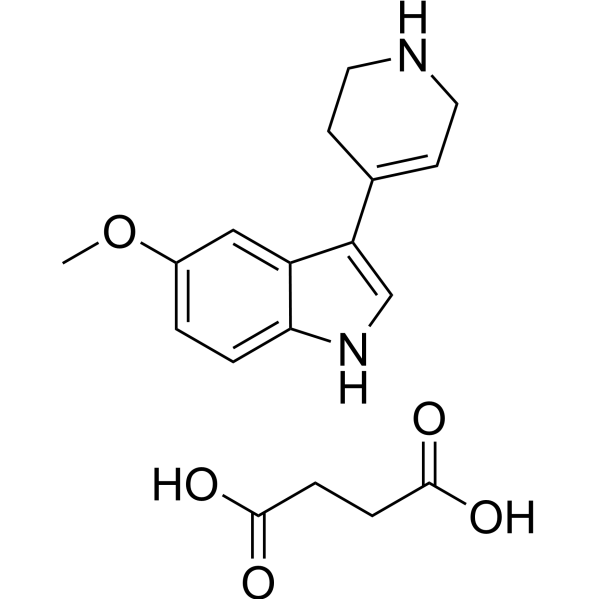
-
- HY-157218
-
|
|
Fungal
|
Inflammation/Immunology
|
|
PPm, a derivative of penthiopyrad and hapten, is a representative member of the succinate dehydrogenase inhibitors group of fungicides .
|
-
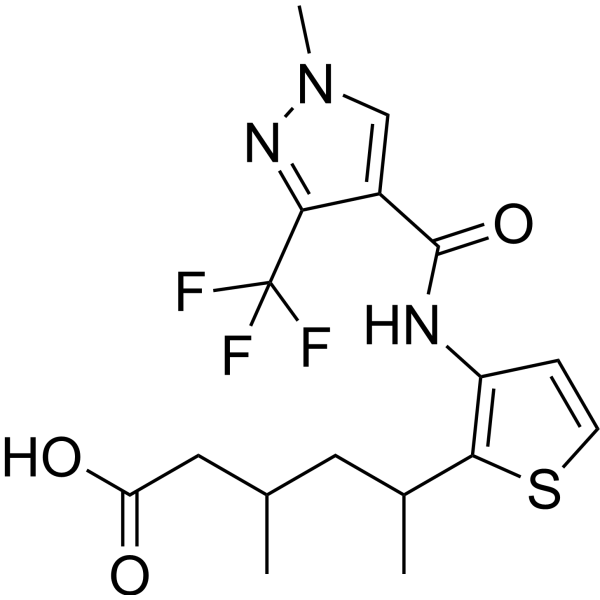
-
- HY-140701
-
|
|
PROTAC Linkers
|
Cancer
|
|
m-PEG-Succinimidyl Succinate (MW 5000) is a PEG-based PROTAC linker that can be used in the synthesis of PROTACs .
|
-

- HY-B0121BS
-
|
GR 43175C-d6
|
5-HT Receptor
Isotope-Labeled Compounds
|
Neurological Disease
|
|
Sumatriptan-d6 succinate is the deuterium labeled Sumatriptan succinate. Sumatriptan succinate is an orally active 5-HT1 receptor agonist with Kis of 17 nM, 27 nM and 100 nM for 5-HT1D, 5-HT1B and 5-HT1A receptors, respectively. Sumatriptan succinate can be used for migraine headache research .
|
-
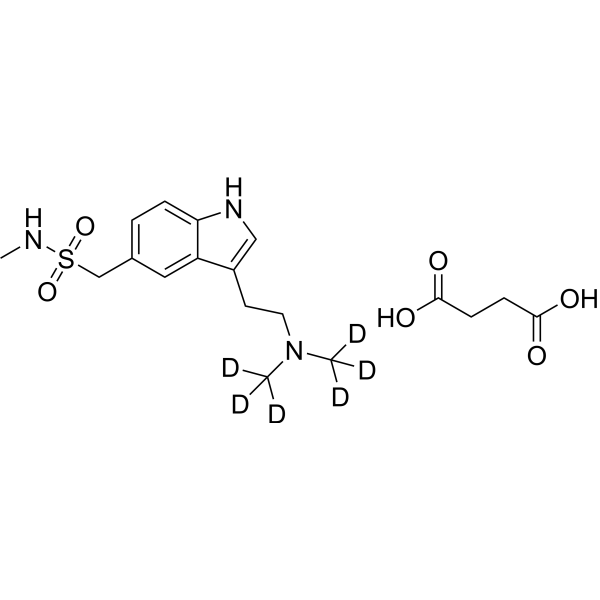
- HY-A0002
-
|
YM905
|
mAChR
|
Neurological Disease
|
|
Solifenacin Succinate (YM905) is a novel muscarinic receptor antagonist with pKis of 7.6, 6.9 and 8.0 for M1, M2 and M3 receptors, respectively.
|
-
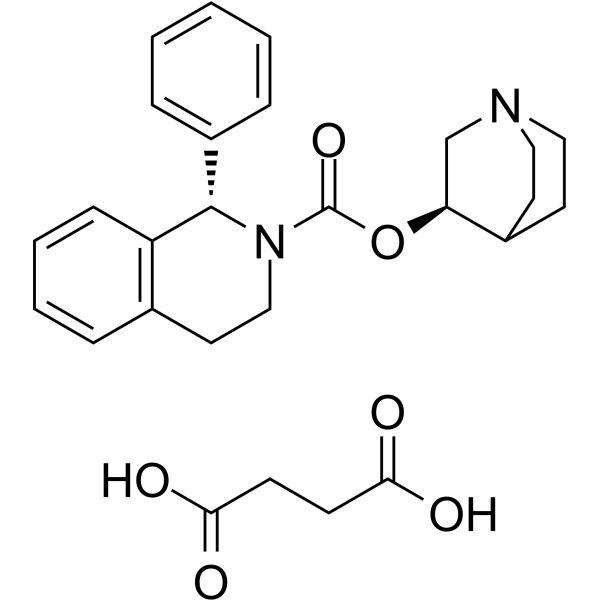
- HY-17390A
-
|
|
5-HT Receptor
Dopamine Receptor
|
Infection
Neurological Disease
|
|
Loxapine succinate is an orally active dopamine inhibitor, 5-HT receptor antagonist and also a dibenzoxazepine anti-psychotic agent. Loxapine can also suppresses bacterial efflux pump activity and inhibit intracellular multiple-antibiotic-resistant Salmonella enterica serovar Typhimurium in macrophages .
|
-
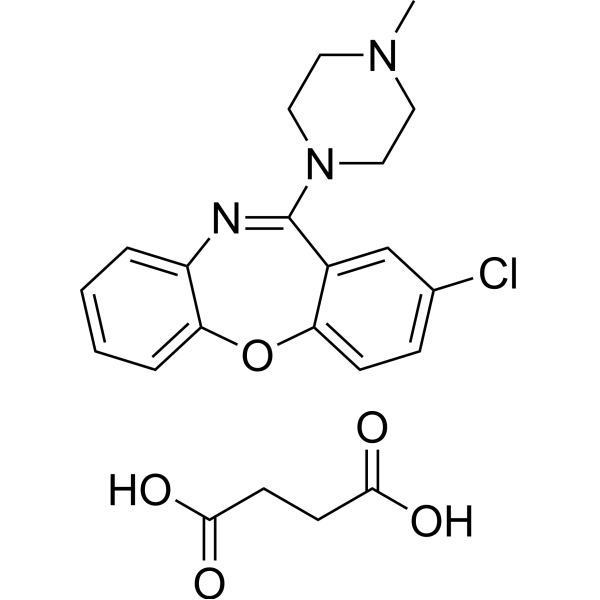
- HY-152927
-
|
|
Biochemical Assay Reagents
|
Others
|
|
Hydroxypropylmethyl cellulose acetate succinate (Mw: 20-100k Da) is a cosolvent for preparing SDDs of low-solubility agents. Hydroxypropylmethyl cellulose acetate succinate (Mw: 20-100k Da) exhibits no acute/subchronic/chronic toxicity in rats, with oral activity and LD50 >2.5 g/kg .
|
-

- HY-A0163S
-
|
|
Dopamine Receptor
|
Neurological Disease
|
|
Zuclopenthixol-d4 (succinate) is the deuterium labeled Zuclopenthixol. Zuclopenthixol is a thioxanthene derivative which acts as a mixed dopamine D1/D2 receptor antagonist[1][2].
|
-
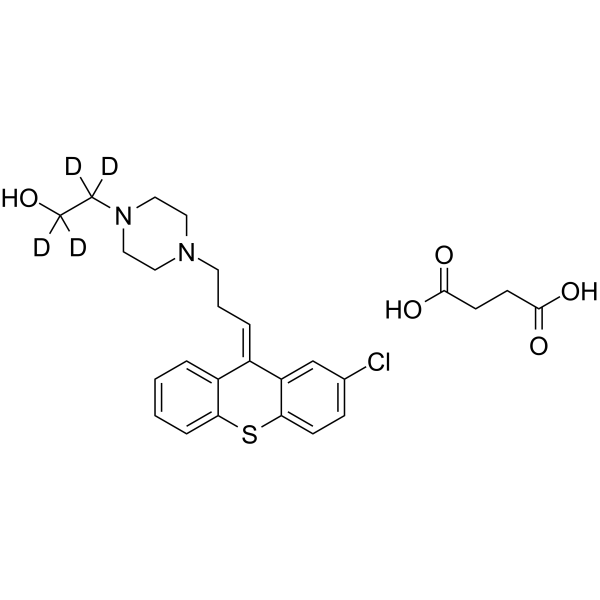
- HY-150127
-
|
|
Fungal
|
Infection
|
|
Pydiflumetofen is a new generation of succinate dehydrogenase inhibitor fungicide .
|
-

- HY-Y0836S
-
|
1,4-Diethyl butanedioate-1,2,3,4-13C4
|
Isotope-Labeled Compounds
|
Metabolic Disease
|
|
Diethyl succinate- 13C4 is the 13C labeled Diethyl succinate[1]. Diethyl succinate (Diethyl Butanedioate) is used at physiological pH and crosses biological membranes, incorporates into cells in tissue culture and is metabolized by the TCA cycle. Diethyl succinate is known to be non-toxic and used in fragrances and flavoring[2].
|
-

- HY-101466A
-
|
|
FGFR
|
Cancer
|
|
E7090 succinate is an orally available, selective and potent inhibitor of FGFR1, FGFR2 and FGFR3 tyrosine kinase activities, with IC50 values of 0.71 nM, 0.50 nM, 1.2 nM, and 120 nM for FGFR1/2/3/4, respectively .
|
-
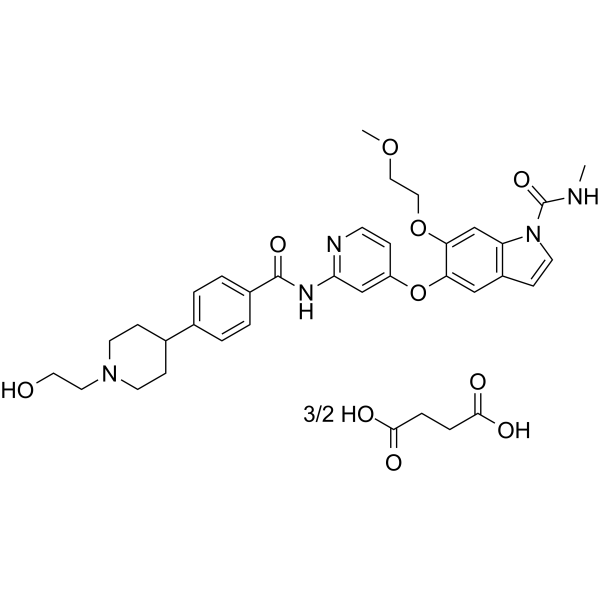
- HY-W018601
-
|
Nortropenol
|
Others
|
Others
|
|
Nortropine (Nortropenol), isolated from the total alkaloids of Convolvulus subhirsutus, is an intermediate in tropine breakdown and reactions leading to succinate .
|
-
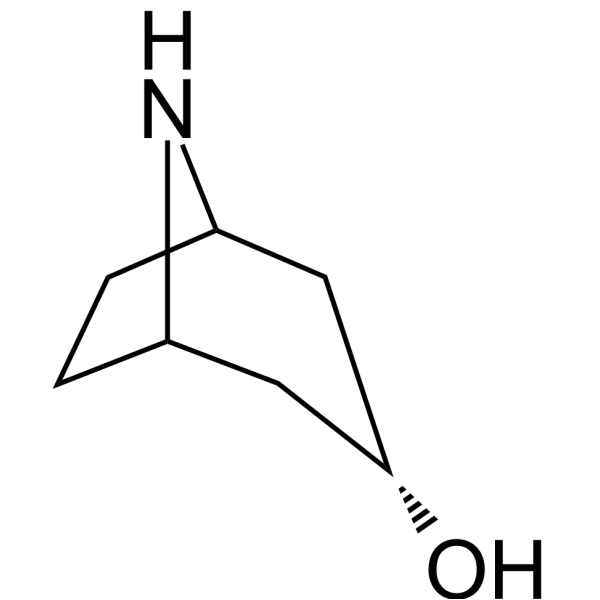
- HY-114362
-
|
TPGS-750-M
|
Biochemical Assay Reagents
|
Others
|
|
DL-alpha-Tocopherol methoxypolyethylene glycol succinate solution (TPGS-750-M) is an amphiphile, acts as a surfactant .
|
-
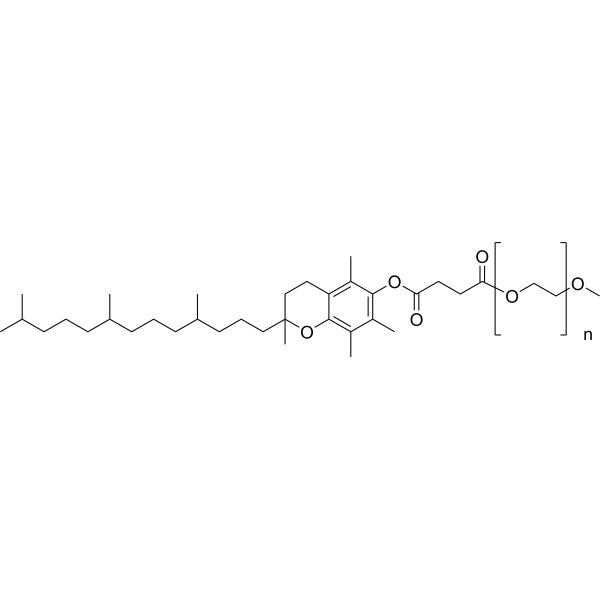
- HY-N0677A
-
|
Potassium dehydroandrographolide succinate
|
Antibiotic
|
Infection
Inflammation/Immunology
Cancer
|
|
Kalii Dehydrographolidi Succinas (Potassium dehydroandrographolide succinate), extracted from herbal medicine Andrographis paniculata (Burm f) Nees, is widely used for the treatment of viral pneumonia and viral upper respiratory tract infections because of its immunostimulatory, anti-infective and anti-inflammatory effect .
|
-
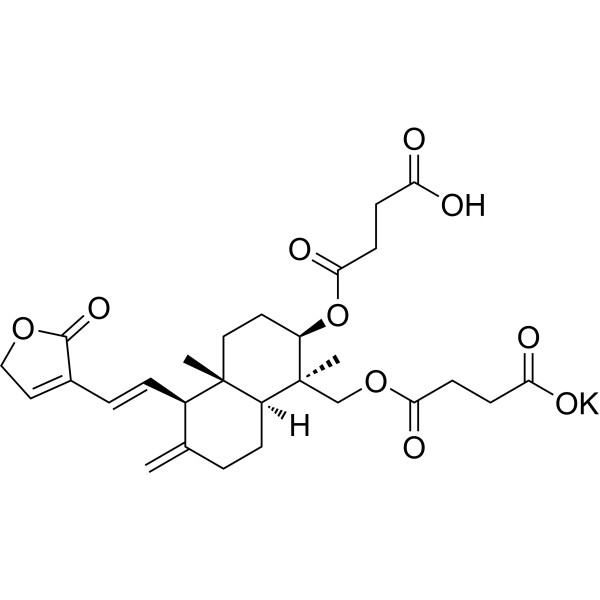
- HY-149600
-
|
|
Fungal
|
Infection
|
|
SDH-IN-7 (compound G28) is a potent succinate dehydrogenase (SDH) inhibitor with an IC50 of 26 nM for porcine SDH. SDH-IN-7 has fungicidal properties .
|
-

- HY-149601
-
|
|
Fungal
|
Infection
|
|
SDH-IN-8 (compound G40) is a potent succinate dehydrogenase (SDH) inhibitor with an IC50 of 27 nM for porcine SDH. SDH-IN-8 has fungicidal properties .
|
-
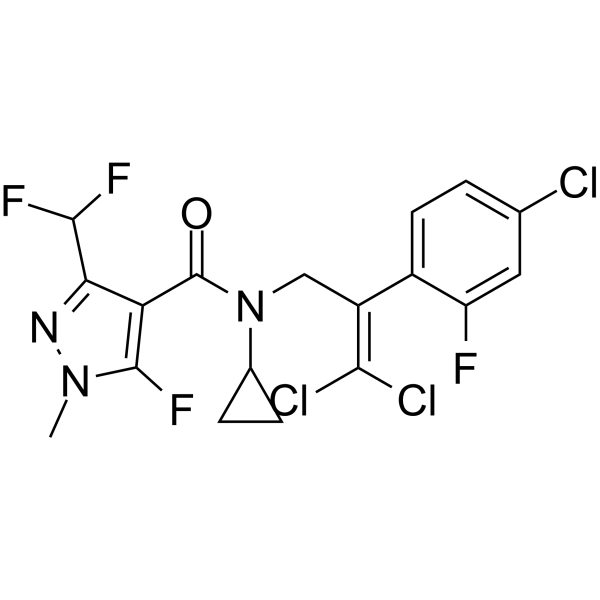
- HY-139983
-
|
|
Fungal
|
Infection
|
|
SDH-IN-1 (compound 4i) is a succinate dehydrogenase (SDH) inhibitor with an IC50 of 4.53 μM. SDH-IN-1 has potent antifungal activities. SDH-IN-1 displays potent activity against S. sclerotiorum (EC50 of 0.14 mg/L) .
|
-

- HY-156270
-
|
|
Bacterial
|
Infection
|
|
SDH-IN-9 (compound Ip) is a potent inhibitor of Succinate Dehydrogenase. SDH-IN-9 shows fungicidal activity against Fusarium graminearum Schw with the EC50 of 0.93 μg/mL .
|
-

- HY-W587754
-
|
|
Fungal
|
Infection
|
|
Benzovindiflupyr is a succinate dehydrogenase inhibitor (SDHI). Benzovindiflupyr has high activity against S. sclerotiorum. Benzovindiflupyr can be used for the research of sclerotinia stem rot .
|
-

- HY-129605
-
-
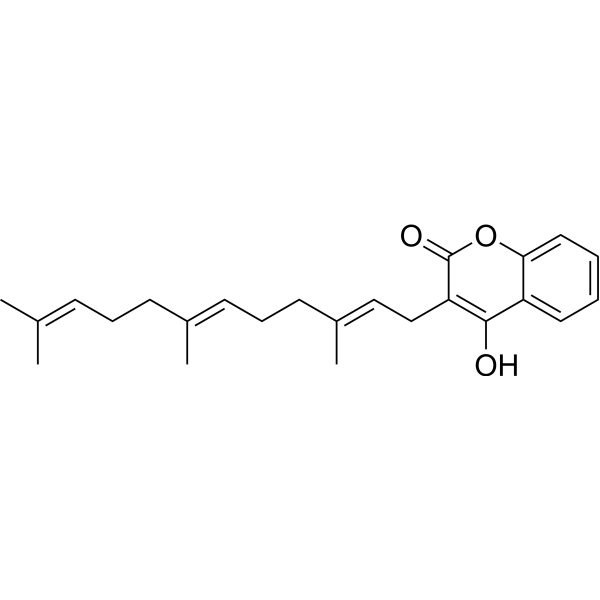
- HY-W010800A
-
|
Cholesterol hydrogen succinate Tris salt; CHS-Tris
|
Topoisomerase
DNA/RNA Synthesis
Apoptosis
Necroptosis
|
Cancer
|
|
Cholesterol hemisuccinate Tris salt (CHS-Tris) is often used to replace cholesterol in protein crystallography, biochemical studies of proteins, and pharmacology. CHS-Tris and Lauryl Maltose Neopentyl Glycol (LMNG) or n-Dodecyl-β-D-Maltoside (DDM) are used together for the solubilization of membrane proteins while maintaining structural integrity and activity. Cholesteryl succinate also reportedly exhibits antiproliferative activity.
|
-
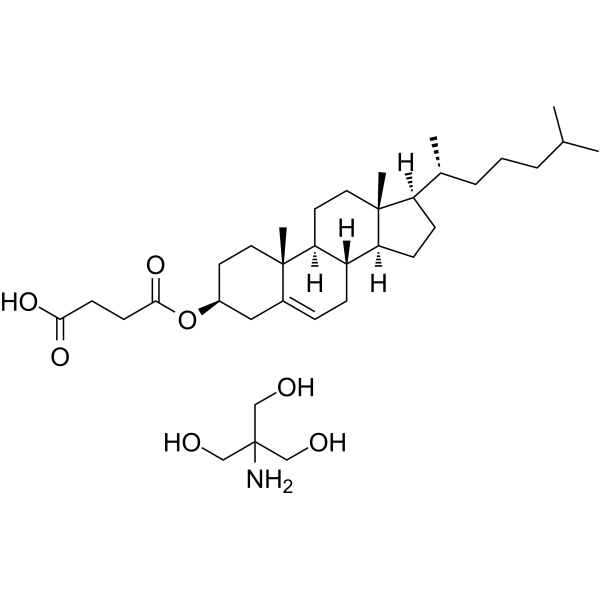
- HY-148921
-
|
|
Fungal
|
Infection
|
|
SDH-IN-2 is a potent succinate dehydrogenase (SDH) inhibitor with an IC50 of 0.55 μg/mL. SDH-IN-2 is also an antifungal agent. SDH-IN-2 inhibits phytopathogenic fungia with average EC50 values of 3.82-9.81 μg/mL for all the fungi . SDH-IN-2 is a click chemistry reagent, it contains an Alkyne group and can undergo copper-catalyzed azide-alkyne cycloaddition (CuAAc) with molecules containing Azide groups.
|
-

- HY-156955
-
-
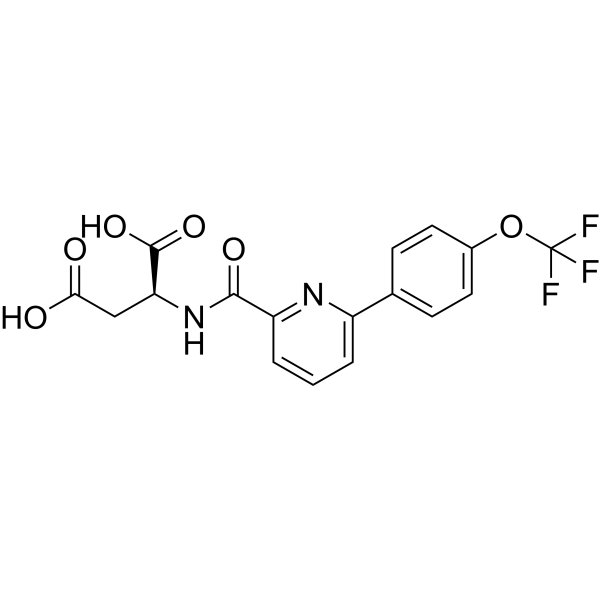
- HY-151197
-
|
|
HIV Protease
|
Infection
|
|
HIV protease-IN-1 (compound 1·succinate) is a potent HIV protease non-peptidic inhibitor, can be used to research AIDS .
|
-
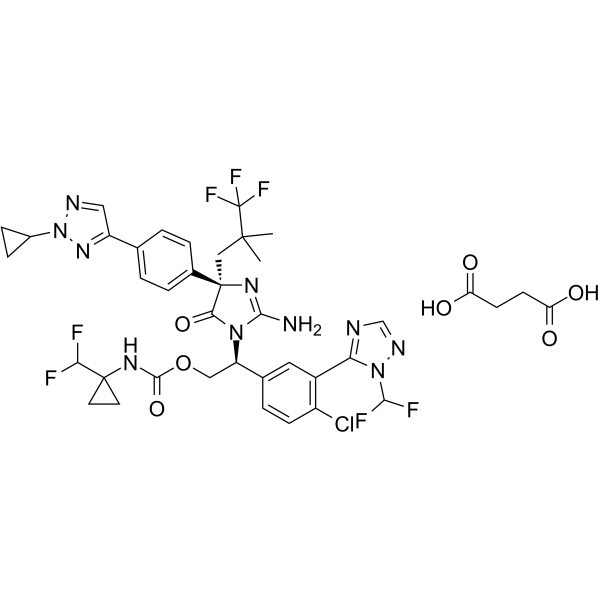
- HY-139851
-
|
|
Fungal
|
Infection
|
|
Fungicide5 is a fungicide candidate targeting succinate dehydrogenase (Ki = 0.095 μM).
|
-

- HY-149653
-
|
|
Fungal
|
Infection
|
|
SDH-IN-10 is a potent succinate dehydrogenase inhibitor (SDHI) with antifungal effects .
|
-
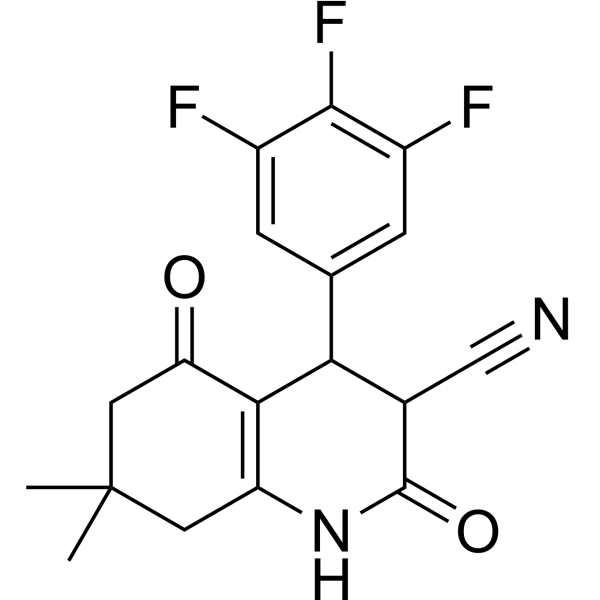
- HY-B0957
-
|
Erythromycin ethyl succinate; EES
|
Bacterial
HIV
Autophagy
Antibiotic
|
Infection
|
|
Erythromycin Ethylsuccinate is an antibiotic useful for the treatment of a number of bacterial infections, has an antimicrobial spectrum similar to or slightly wider than that of penicillin. Erythromycin Ethylsuccinate has antiviral activity against HIV-1.
|
-
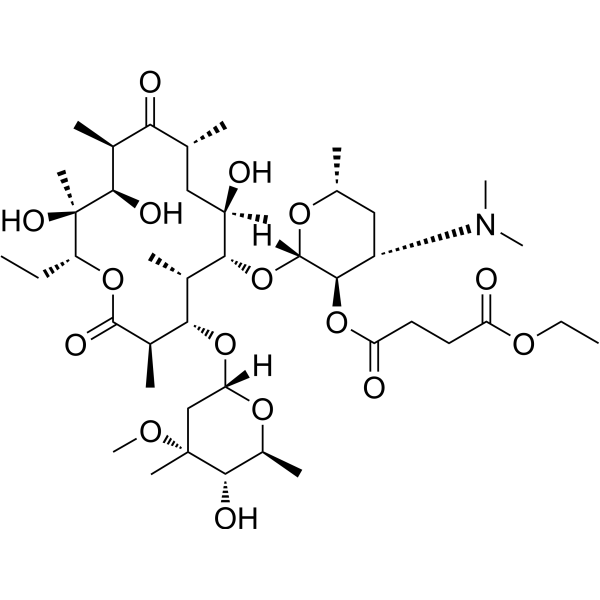
- HY-125100
-
|
|
Others
|
Others
|
|
Loroglossin (compound 5) is a succinate derivative. Loroglossin can isolated from dried rhizomes of Gymnadenia conopsea .
|
-
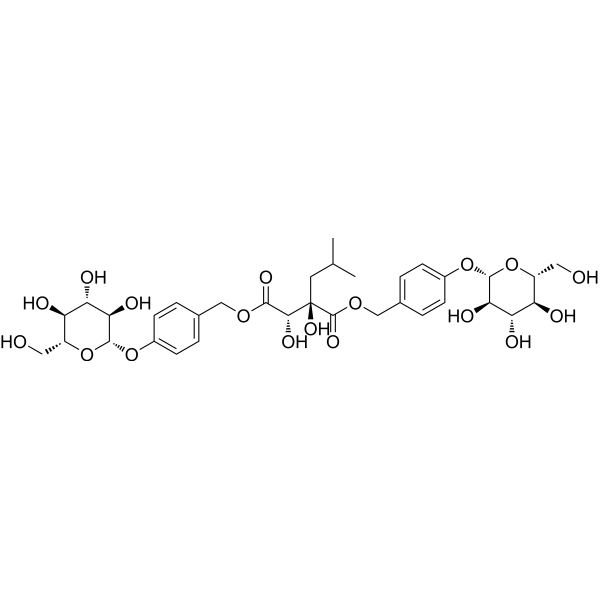
- HY-162142
-
|
|
Bacterial
|
Infection
|
|
BB2-50F is a potent and multi-targeting bioenergetic bactericidal inhibitor of M. tuberculosis and can sterilizes replicating and non-replicating M. tuberculosis. BB2-50F inhibits succinate oxidation, decreases the activity of the tricarboxylic acid (TCA) cycle, and results in succinate secretion from M. tuberculosis.
|
-
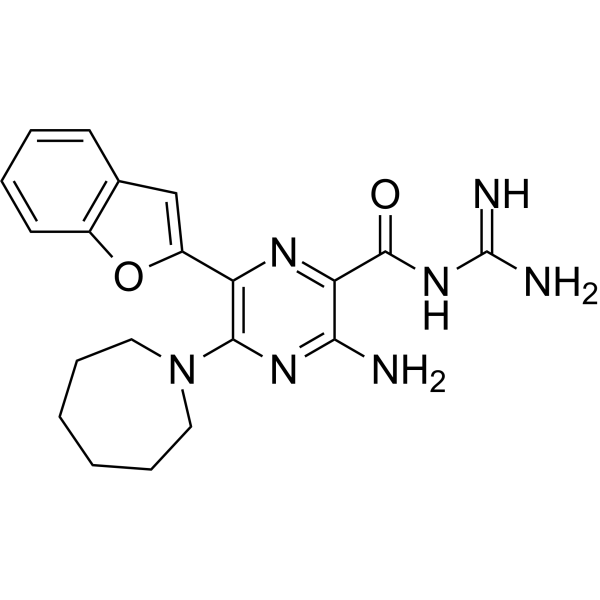
- HY-139839
-
|
|
Fungal
|
Infection
|
|
Y12196 is a novel succinate dehydrogenase inhibitor (SDHI) which exhibits strong fungicidal activity against F. graminearum.
|
-
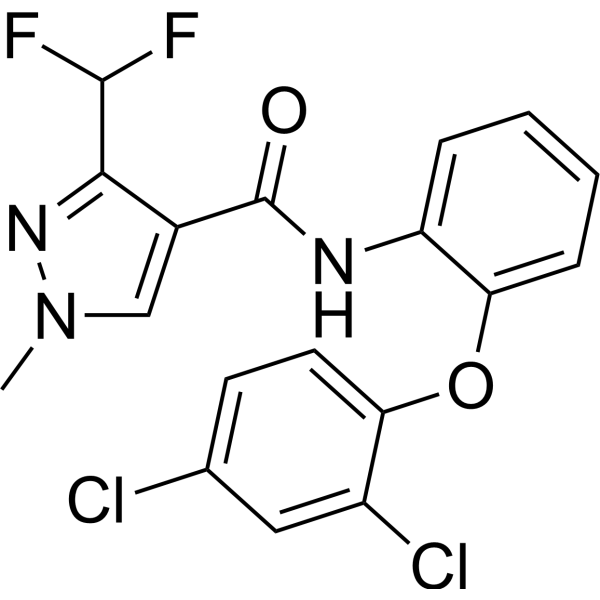
- HY-119459
-
|
|
Fungal
|
Infection
|
|
Fluopyram is a succinate dehydrogenase inhibitor fungicide, inhibits the growth of F. virguliforme isolates with mean EC50 of 3.35 µg/mL .
|
-
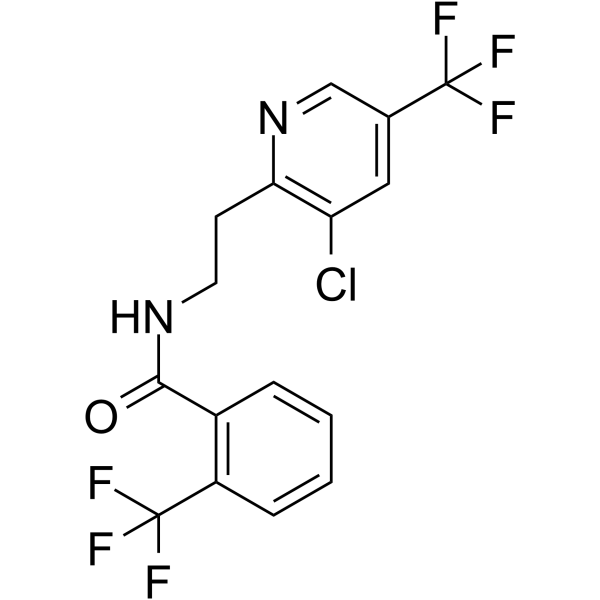
- HY-B2004
-
|
|
Fungal
|
Infection
|
|
Thifluzamide, a broad-spectrum succinate dehydrogenase inhibitor (SDHI) fungicide, has been widely used in the controlling of a variety of fungal diseases in rice fields .
|
-
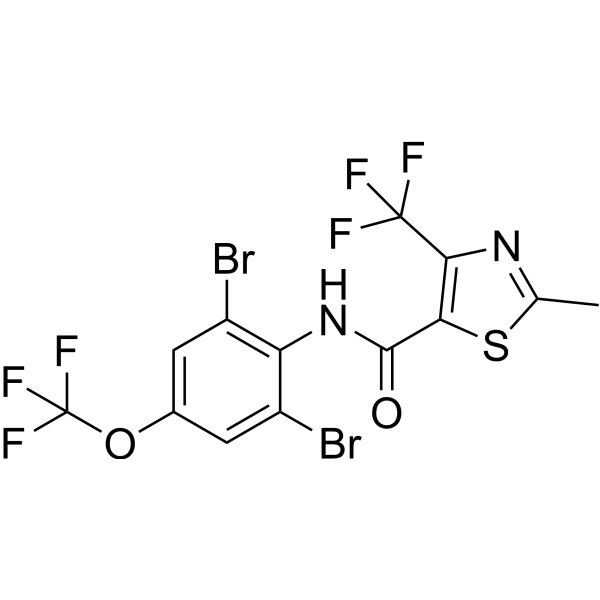
- HY-106371
-
|
|
Antibiotic
Fungal
|
Infection
|
|
Siccanin is a succinate dehydrogenase (SDH) inhibitor (IC50=0.9 μM) with species-selective activity. Siccanin also is a antibiotic against pathogenic fungi .
|
-
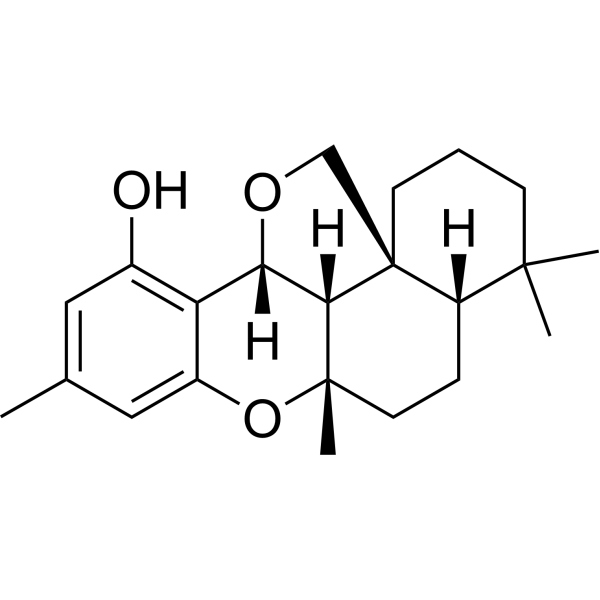
- HY-120183
-
|
|
Fungal
|
Infection
|
|
Harzianopyridone is a compound that can be isolated from Trichoderma harzianum. Harzianopyridone is a succinate dehydrogenase (SDH) inhibitor with an IC50 of 80 nM. Harzianopyridone has antifungal, antibacterial, and herbicidal activities .
|
-
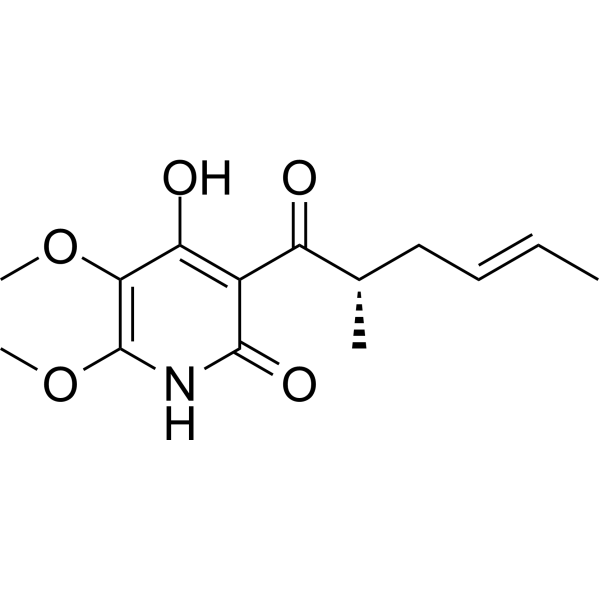
- HY-D0007
-
|
Tetrazolium blue
|
Fluorescent Dye
|
Others
|
|
Blue Tetrazolium (Tetrazolium blue), as a blue dye for microbial research, can be reduced into blue tetrazolium formazan (BTF). Blue Tetrazolium can be used to determine the activity of succinate dehydrogenase (SDH) in yeast strains, which has been reduced as a substrate. Use DMSO to extract BTF from cells, and test absorption spectrum of BTF. The BTF shows a wide wavelength range of 480-600 nm with maximal absorbance seen at 540 nm. Blue Tetrazolium, combines with succinate dehydrogenase (SDH) .
|
-
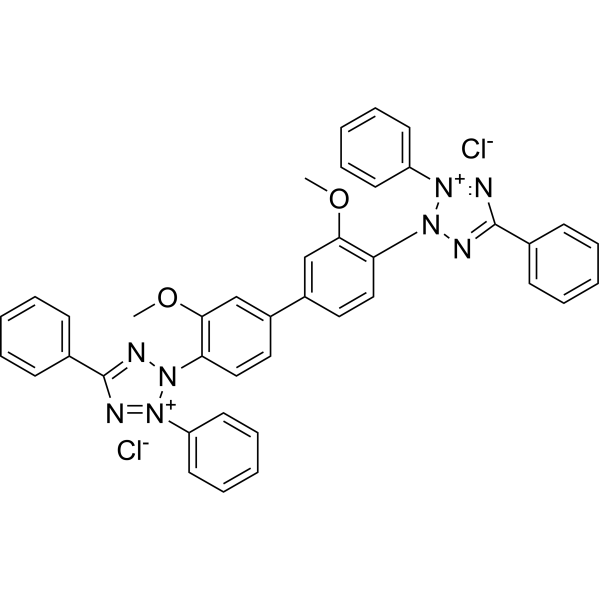
- HY-125531
-
|
|
Others
|
Others
|
|
Dactylorhin A, a succinate derivative ester, is isolated from rhizomes of Gymnadenia conopsea. Dactylorhin A exhibits moderate inhibitory effects on NO production effects in RAW 264.7 macrophage cells .
|
-
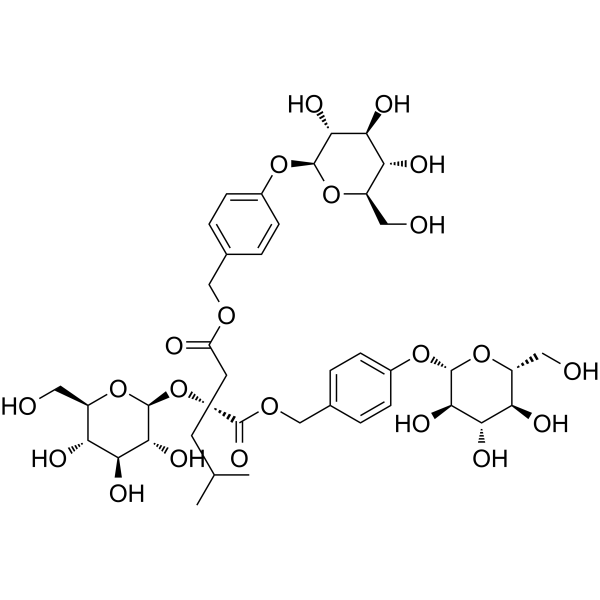
- HY-145326
-
|
|
Fungal
|
Others
|
|
Antibacterial agent 67 (IC50 = 0.03 μM) has a great enzyme-inhibiting activity increase toward succinate dehydrogenase in comparison with fluxapyroxad (IC50 = 4.40 μM).
|
-

- HY-Y1787
-
|
|
|
|
|
Dimethyl malonate is a competitive inhibitor of succinate dehydrogenase (SDH). Dimethyl malonate is able to cross the blood-brain barrier and hydrolyse to malonate. Dimethyl malonate reduces neuronal apoptosis .
|
-

- HY-155700
-
|
|
Fungal
|
Infection
|
|
SDH-IN-6 (compound 6i) is a potent succinate dehydrogenase (SDH) inhibitor. SDH-IN-6 has antifungal activity against Valsa mali with an EC50 value of 1.77 mg/L .
|
-
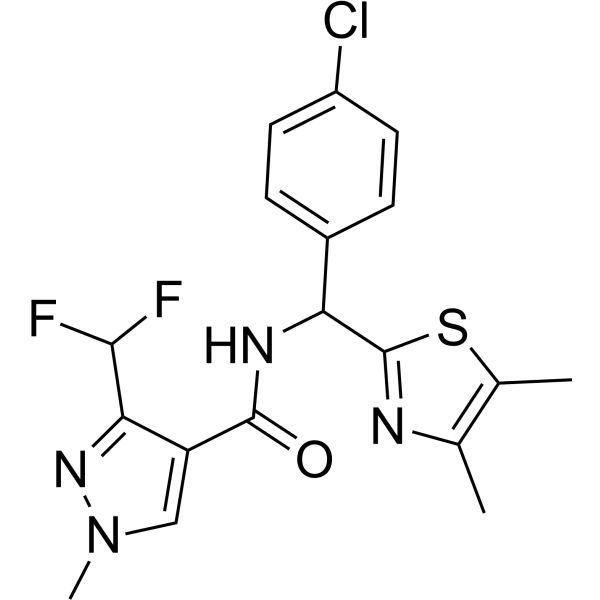
- HY-17390BS
-
-

- HY-108012
-
|
|
Fungal
|
Infection
|
|
ME1111 is an antifungal agent that is active against dermatophytes. ME1111 is an inhibitor of the succinate dehydrogenase of Trichophyton species. ME1111 has an excellent ability to penetrate human nails and is used for onychomycosis research .
|
-
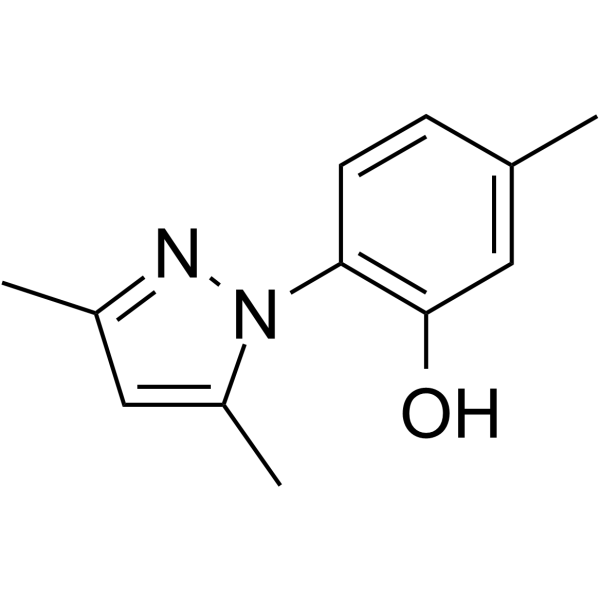
- HY-135549
-
|
|
Fungal
Antibiotic
|
Infection
|
|
Fluxapyroxad is a synthetic broad-spectrum fungicide for the control of fungal diseases. It works by inhibiting succinate dehydrogenase in complex II of the mitochondrial respiratory chain, resulting in inhibition of spore germination, germ tubes and mycelia growth within the fungus target species .
|
-
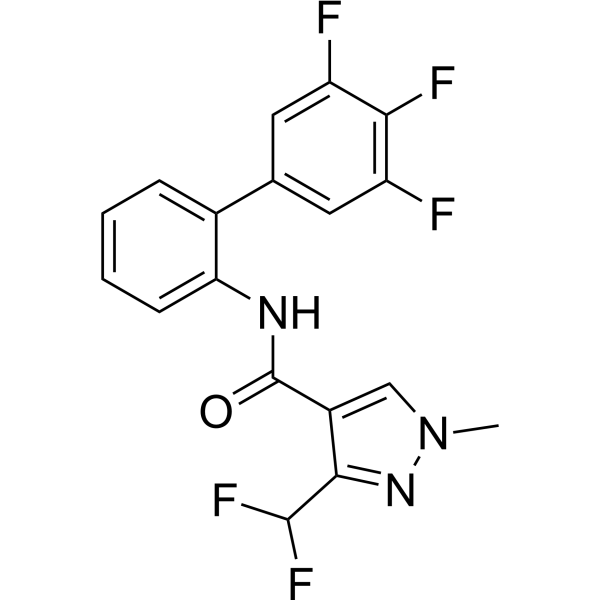
- HY-125791
-
|
|
Succinate Receptor 1
|
Cardiovascular Disease
|
|
cis-Epoxysuccinic acid is a succinate receptor (SUCNR1/GPR91) agonist. cis-Epoxysuccinic acid inhibits cAMP levels with an EC50 value of 2.7 µM. cis-Epoxysuccinic acid can be used for the research of cardiovascular system .
|
-

- HY-15408
-
|
SYR-472
|
Dipeptidyl Peptidase
|
Metabolic Disease
|
|
Trelagliptin (SYR-472) is a potent, orally active and highly selective DPP-4 inhibitor with an IC50 of 4 nM. Trelagliptin succinate improves glycemic control in vivo and can be used for the study of type 2 diabetes mellitus (T2DM) .
|
-

- HY-W012875
-
|
β-Nitropropionic acid; Bovinocidin
|
Bacterial
Apoptosis
Autophagy
|
Infection
Metabolic Disease
|
|
3-Nitropropanoic acid (β-Nitropropionic acid) is an irreversible and orally active inhibitor of succinate dehydrogenase. 3-Nitropropanoic acid exhibits potent antimycobacterial activity with a MIC value of 3.3 μM. 3-Nitropropanoic acid can induce cell apoptosis .
|
-
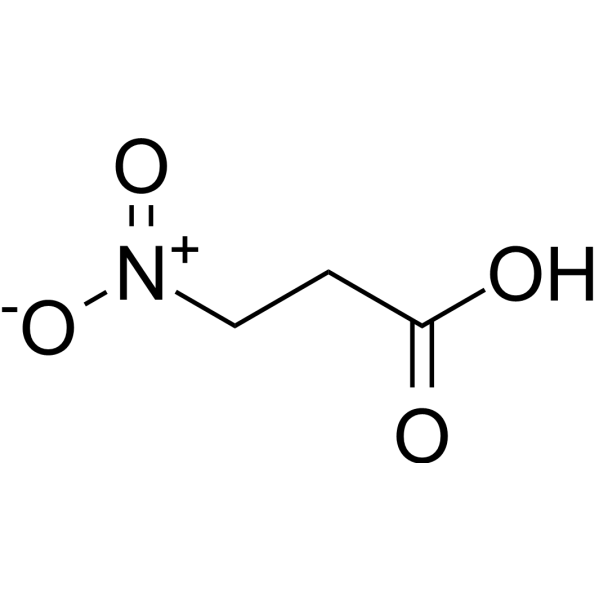
- HY-162458
-
|
|
Bacterial
Fungal
|
Infection
Inflammation/Immunology
|
|
Antibacterial agent 209 (compound 3i) has significant antifungal effects against S. sclerotiorum with an EC50 value of 0.33 mg/L. Antibacterial agent 209 has an IC50 of 0.63 mg/mL against the Succinate dehydrogenase (SDH) of S. sclerotiorum .
|
-
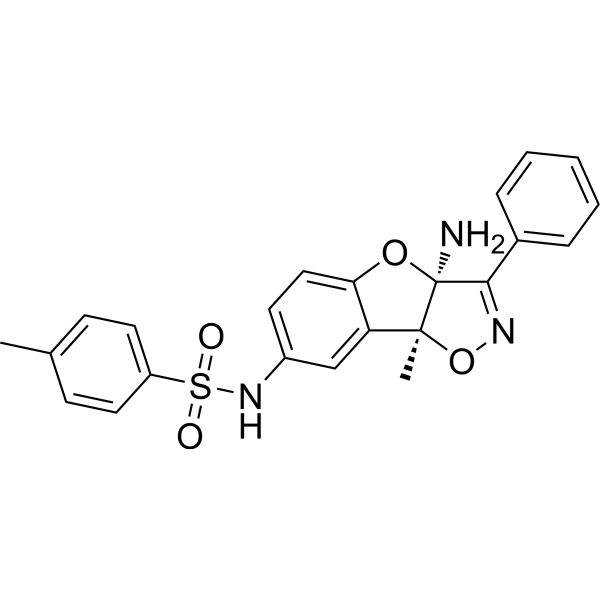
- HY-155004
-
|
|
Antibiotic
Fungal
|
Infection
|
|
SDH-IN-3 is a succinate dehydrogenase (SDH) inhibitor with an IC50 of 7.2 μg/mL. SDH-IN-3 exhibits excellent antifungal activities against Nigrospora oryzae with an EC50 of 1.9 μg/mL. SDH-IN-3 can be used for anti-infection research .
|
-
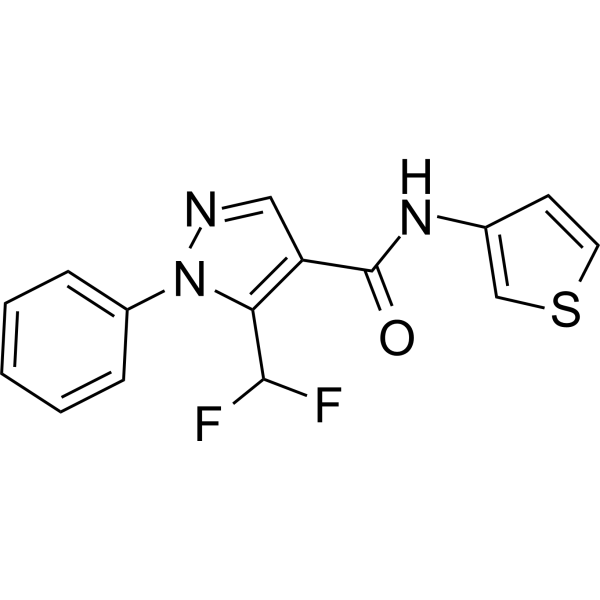
- HY-149323
-
|
|
Fungal
|
Infection
|
|
SDH-IN-4 (compound B6) is a selective inhibitor against succinate dehydrogenase (SDH) with an IC50 value of 0.28 μg/mL. SDH-IN-4 has highly efficient and broad-spectrum antifungal activity, against R. solani with an EC50 value of 0.23 μg/mL .
|
-
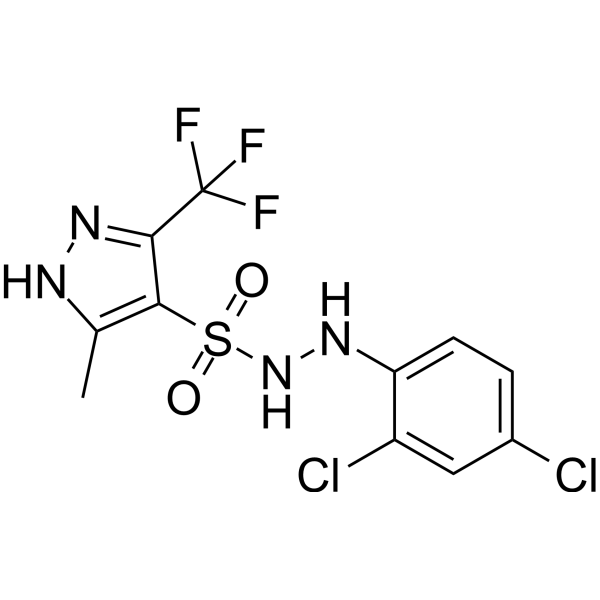
- HY-D0018
-
|
Dichlorophenylindophenol sodium; DCPIP sodium; Indochlorophenol sodium
|
Biochemical Assay Reagents
|
Others
|
|
DCIP sodium is a blue dye commonly used in various biochemical and biotechnological applications as an indicator of redox reactions. DCIP sodium has unique chemical properties that change color according to the oxidation state of the substance being tested. It is commonly used in enzyme assays, such as measuring the activity of succinate dehydrogenase, or in protein quantification methods, such as the Lowry assay.
|
-
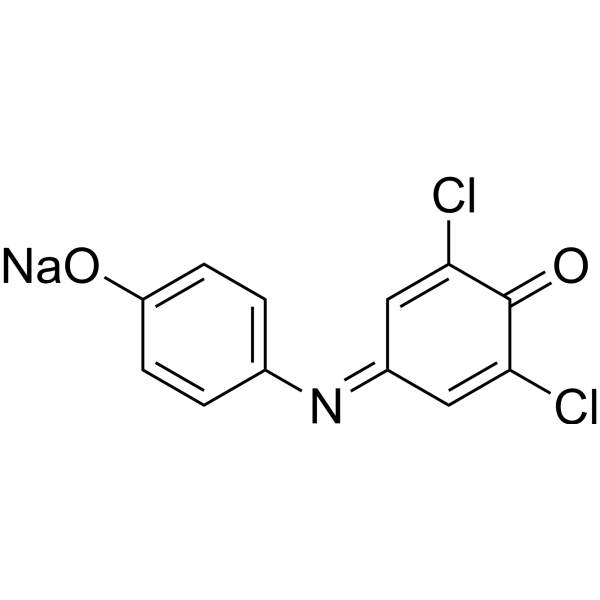
- HY-139161
-
|
|
Fungal
|
Infection
|
|
Penflufen is a highly efficient, broad-spectrum succinate dehydrogenase inhibitor (SDHI). Penflufen can be used as a fungicide and has broad bioactivity against many fungal diseases, including potato black scurf, wheat sharp eyespot, rice sheath blight, and root rot in peanut and other similar fungal diseases .
|
-
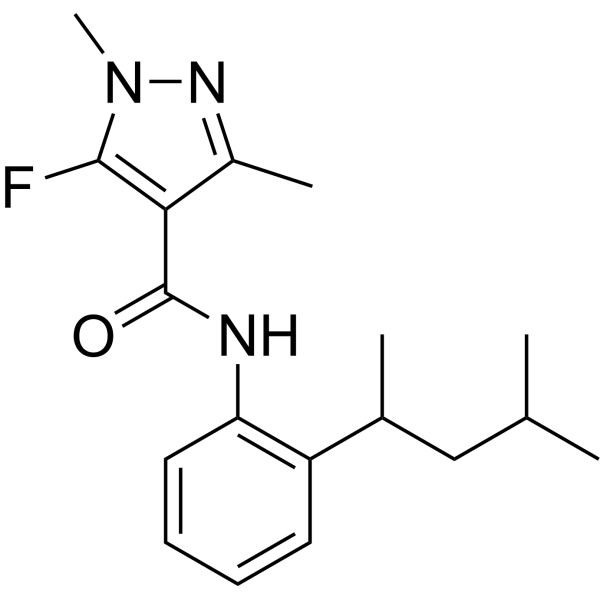
- HY-157459
-
|
|
Fungal
|
Infection
|
|
SDH-IN-11 (compound A7) is a SDH inhibitor, and shows inhibitory effect on nematode feeding, reproductive ability, and egg hatching. SDH-IN-11 promotes the oxidative stress of nematodes and causes intestinal damage to nematodes. SDH-IN-11 inhibits the activity of succinate dehydrogenase (SDH) in nematodes .
|
-
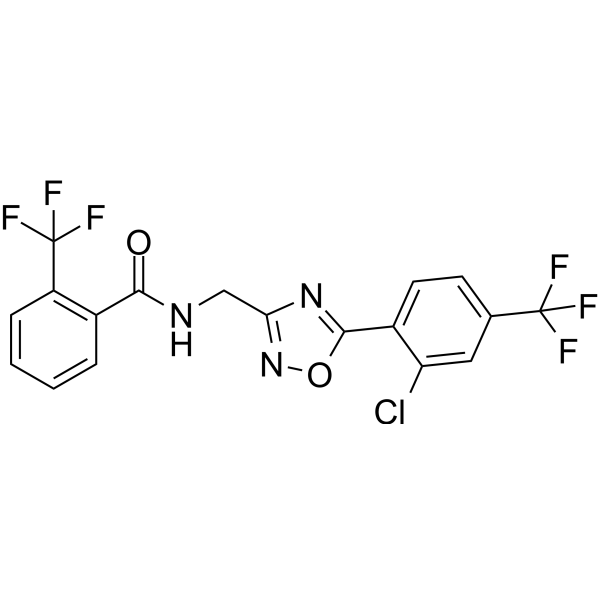
- HY-163284
-
|
|
Succinate Dehydrogenase
Fungal
|
Infection
|
|
SDH-IN-12 (compound 9b) is a succinate dehydrogenase inhibitor, which exhibits activity against S. sclerotiorum and C. arachidicola, with EC50s of 0.97 and 2.07 μM, respectively. SDH-IN-12 reveals no significant herbicidal activity against monocotyledonous and dicotyledonous plants .
|
-
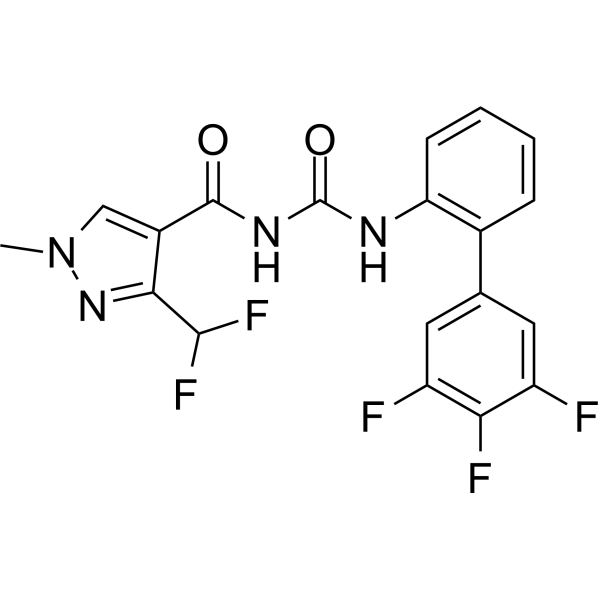
- HY-16137
-
|
Cephaloglycin
|
Bacterial
|
Infection
|
|
Cefaloglycin (Cephaloglycin) is an orally active nephrotoxic β-lactam cephalosporin antibiotic with antibacterial activity. Cefaloglycin is activity against Gram-Positive cocci other than enterococci. Cefaloglycin is toxic to mitochondrial substrate uptake and respiration .
|
-
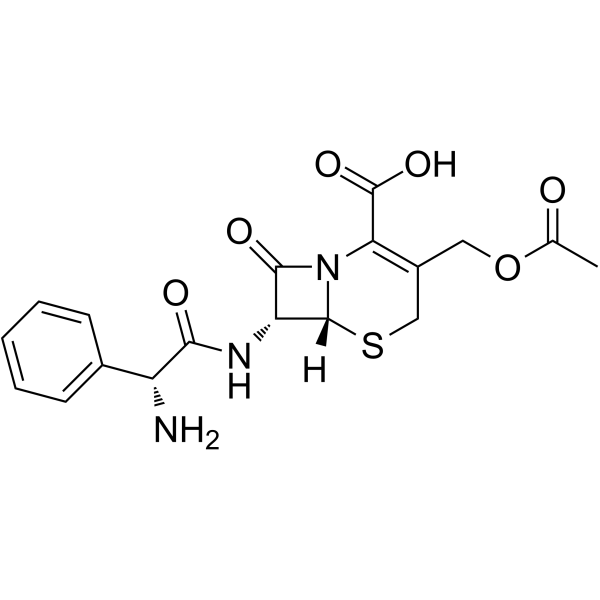
- HY-B0717
-
|
TPGS; D-α-Tocopherol polyethylene glycol 1000 succinate; Vitamin E-TPGS
|
Others
|
Neurological Disease
Metabolic Disease
|
|
Tocofersolan is synthetic polyethylene glycol derivative of α-tocopherol. Tocofersolan is an orally active and water-soluble analog of vitamin E. Tocofersolan can reduce neurobehavioral deficits in zebrafish embryos exposed to moderate and high concentrations of BaP during early development. Tocofersolan shows antioxidant activity. Tocofersolan can be used to provide an orally bioavailable source of vitamin E .
|
-

- HY-N0420
-
|
Wormwood acid
|
Endogenous Metabolite
|
Neurological Disease
|
|
Succinic acid is an anti-anxiety agent with oral activity. Disodium succinate is the salt form of Succinic acid. Succinic acid is an intermediate product of the tricarboxylic acid cycle. Succinic acid is an important platform chemical. Succinic acid can be used as surfactant, additive, ion chelating agent, flavoring agent and other applications in chemical, pharmaceutical and food fields .
|
-
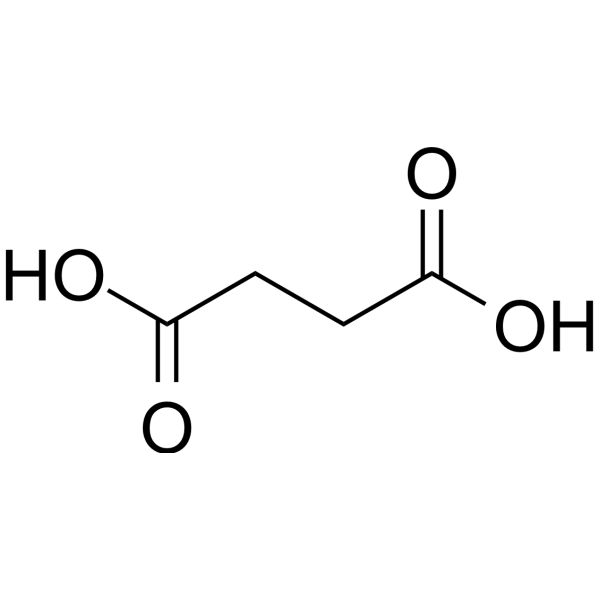
- HY-149876
-
|
|
Fungal
|
Infection
|
|
SDH-IN-5 (compound 7d) is a potent succinate dehydrogenase (SDH) inhibitor, with an IC50 of 3.293 μM. SDH-IN-5 is also exhibits antifungal activity, with an EC50 of 0.046 μg/mL against R. solani. SDH-IN-5 could significantly inhibit the growth of R. solani in rice leaves with excellent protective and curative efficacies .
|
-
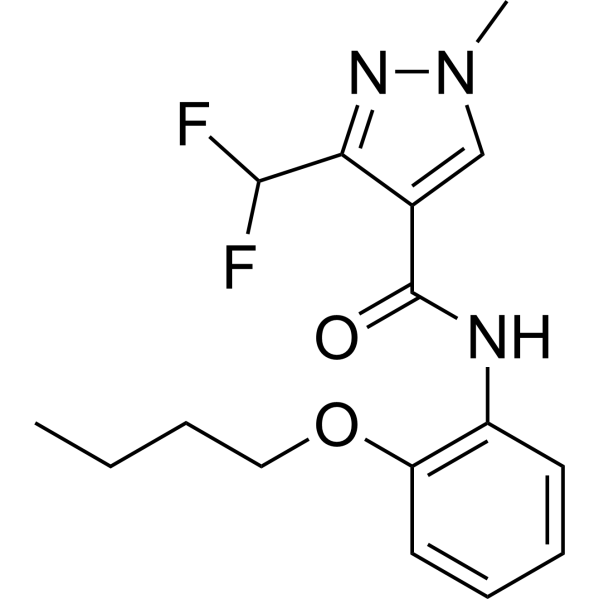
- HY-157015
-
|
|
Fungal
|
Infection
|
|
Antifungal agent 81(G22)exhibitsexcellent in vitro antifungal activities against Valsa mali withIC50values of 0.48 mg/L. Antifungal agent 81also exhibits excellent in vivo protective againstV. maliat 40 mg/L .
|
-

- HY-B0957S
-
|
Erythromycin ethyl succinate-13C,d3; EES-13C,d3
|
Isotope-Labeled Compounds
Bacterial
HIV
Autophagy
Antibiotic
|
Infection
|
|
Erythromycin ethylsuccinate- 13C,d3 is the 13C- and deuterium labeled Erythromycin Ethylsuccinate. Erythromycin Ethylsuccinate is an antibiotic useful for the treatment of a number of bacterial infections, has an antimicrobial spectrum similar to or slightly wider than that of penicillin. Erythromycin Ethylsuccinate has antiviral activity against HIV-1.
|
-

| Cat. No. |
Product Name |
Type |
-
- HY-D0018
-
|
Dichlorophenylindophenol sodium; DCPIP sodium; Indochlorophenol sodium
|
Dyes
|
|
DCIP sodium is a blue dye commonly used in various biochemical and biotechnological applications as an indicator of redox reactions. DCIP sodium has unique chemical properties that change color according to the oxidation state of the substance being tested. It is commonly used in enzyme assays, such as measuring the activity of succinate dehydrogenase, or in protein quantification methods, such as the Lowry assay.
|
| Cat. No. |
Product Name |
Type |
-
- HY-131553
-
|
Vitamin E succinate
|
Biochemical Assay Reagents
|
|
D-α-Tocopherol Succinate (Vitamin E succinate) is an antioxidant tocopherol and a salt form of vitamin E. D-α-Tocopherol Succinate inhibits Cisplatin (HY-17394)-induced cytotoxicity. D-α-Tocopherol Succinate can be used for the research of cancer .
|
-
- HY-Y0808
-
|
|
Biochemical Assay Reagents
|
|
Dimethyl succinate is a biochemical reagent that can be used as a biological material or organic compound for life science related research .
|
-
- HY-119976
-
-
- HY-W250175
-
|
|
Biochemical Assay Reagents
|
|
Methoxypolyethylene glycol succinimidyl succinate is a biochemical reagent that can be used as a biological material or organic compound for life science related research.
|
-
- HY-D0007
-
|
Tetrazolium blue
|
Biochemical Assay Reagents
|
|
Blue Tetrazolium (Tetrazolium blue), as a blue dye for microbial research, can be reduced into blue tetrazolium formazan (BTF). Blue Tetrazolium can be used to determine the activity of succinate dehydrogenase (SDH) in yeast strains, which has been reduced as a substrate. Use DMSO to extract BTF from cells, and test absorption spectrum of BTF. The BTF shows a wide wavelength range of 480-600 nm with maximal absorbance seen at 540 nm. Blue Tetrazolium, combines with succinate dehydrogenase (SDH) .
|
| Cat. No. |
Product Name |
Category |
Target |
Chemical Structure |
| Cat. No. |
Product Name |
Chemical Structure |
-
- HY-Y0808S
-
|
|
|
Dimethyl succinate-d4 is the deuterium labeled Dimethyl succinate[1].
|
-

-
- HY-W015410S2
-
|
|
|
Disodium succinate-d4 is the deuterium labeled Disodium succinate[1]. Disodium succinate is the disodium salt of Succinic acid. Succinic acid is an intermediate product of the tricarboxylic acid cycle, as well as one of fermentation products of anaerobic metabolism[2].
|
-

-
- HY-W015410S
-
|
|
|
Disodium succinate-13C2 is the 13C labeled Disodium succinate[1]. Disodium succinate is the disodium salt of Succinic acid. Succinic acid is an intermediate product of the tricarboxylic acid cycle, as well as one of fermentation products of anaerobic metabolism[2].
|
-

-
- HY-B1658BS
-
|
|
|
Frovatriptan-d3 (succinate) is deuterium labeled Frovatriptan (succinate). Frovatriptan succinate ((R)-Frovatriptan succinate) is a potent, high affinity, selective and orally active 5-HT1B (pK50 of 8.2) and 5-HT1D receptor agonist. Frovatriptan succinate exhibits >10-fold selectivity for 5-HT1B and 5-HT1D over 5-HT1A, 5-HT1F, and 5-HT7 and >1000-fold selectivity over other 5-HT, dopamine, histamine H1, and α1-adrenoceptor. Frovatriptan succinate has the potential for migraine research[1][2].
|
-

-
- HY-Y0836S1
-
|
|
|
Diethyl succinate-d4 is the deuterium labeled Diethyl succinate[1]. Diethyl succinate (Diethyl Butanedioate) is used at physiological pH and crosses biological membranes, incorporates into cells in tissue culture and is metabolized by the TCA cycle. Diethyl succinate is known to be non-toxic and used in fragrances and flavoring[2].
|
-

-
- HY-B1658CS
-
|
|
|
ent-Frovatriptan-d3 (succinate) is deuterium labeled ent-Frovatriptan.
|
-

-
- HY-A0002S
-
|
|
|
Solifenacin-d5 (succinate) is deuterium labeled Solifenacin (Succinate). Solifenacin Succinate (YM905) is a novel muscarinic receptor antagonist with pKis of 7.6, 6.9 and 8.0 for M1, M2 and M3 receptors, respectively.
|
-

-
- HY-B0121BS
-
|
|
|
Sumatriptan-d6 succinate is the deuterium labeled Sumatriptan succinate. Sumatriptan succinate is an orally active 5-HT1 receptor agonist with Kis of 17 nM, 27 nM and 100 nM for 5-HT1D, 5-HT1B and 5-HT1A receptors, respectively. Sumatriptan succinate can be used for migraine headache research .
|
-

-
- HY-A0163S
-
|
|
|
Zuclopenthixol-d4 (succinate) is the deuterium labeled Zuclopenthixol. Zuclopenthixol is a thioxanthene derivative which acts as a mixed dopamine D1/D2 receptor antagonist[1][2].
|
-

-
- HY-Y0836S
-
|
|
|
Diethyl succinate- 13C4 is the 13C labeled Diethyl succinate[1]. Diethyl succinate (Diethyl Butanedioate) is used at physiological pH and crosses biological membranes, incorporates into cells in tissue culture and is metabolized by the TCA cycle. Diethyl succinate is known to be non-toxic and used in fragrances and flavoring[2].
|
-

-
- HY-17390BS
-
|
|
|
Loxapine-d8 (hydrochloride) is the deuterium labeled Loxapine. Loxapine Succinate is a D2DR and D4DR inhibitor, serotonergic receptor antagonist and also a dibenzoxazepine anti-psychotic agent[1][2].
|
-

-
- HY-B0957S
-
|
|
|
Erythromycin ethylsuccinate- 13C,d3 is the 13C- and deuterium labeled Erythromycin Ethylsuccinate. Erythromycin Ethylsuccinate is an antibiotic useful for the treatment of a number of bacterial infections, has an antimicrobial spectrum similar to or slightly wider than that of penicillin. Erythromycin Ethylsuccinate has antiviral activity against HIV-1.
|
-

| Cat. No. |
Product Name |
Application |
Reactivity |
-
- HY-P81835
-
|
SDHB; SDH; SDH1; succinate dehydrogenase [ubiquinone] iron-sulfur subunit; mitochondrial; Iron-sulfur subunit of complex II; Ip
|
WB, IHC-P, IP, FC
|
Human, Mouse, Rat |
| Cat. No. |
Product Name |
|
Classification |
-
- HY-139300A
-
|
HMPL-813 succinate
|
|
Alkynes
|
|
Epitinib succinate is an orally active and selective epidermal growth factor receptor tyrosine kinase inhibitor (EGFR-TKI) designed for optimal brain penetration. Epitinib succinate can be used for the research of cancer . Epitinib (succinate) is a click chemistry reagent, it contains an Alkyne group and can undergo copper-catalyzed azide-alkyne cycloaddition (CuAAc) with molecules containing Azide groups.
|
-
- HY-148921
-
|
|
|
Alkynes
|
|
SDH-IN-2 is a potent succinate dehydrogenase (SDH) inhibitor with an IC50 of 0.55 μg/mL. SDH-IN-2 is also an antifungal agent. SDH-IN-2 inhibits phytopathogenic fungia with average EC50 values of 3.82-9.81 μg/mL for all the fungi . SDH-IN-2 is a click chemistry reagent, it contains an Alkyne group and can undergo copper-catalyzed azide-alkyne cycloaddition (CuAAc) with molecules containing Azide groups.
|
Your information is safe with us. * Required Fields.
Inquiry Information
- Product Name:
- Cat. No.:
- Quantity:
- MCE Japan Authorized Agent:

















































































































